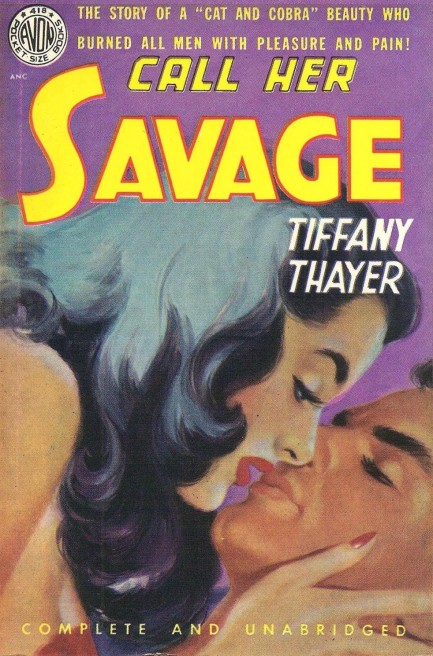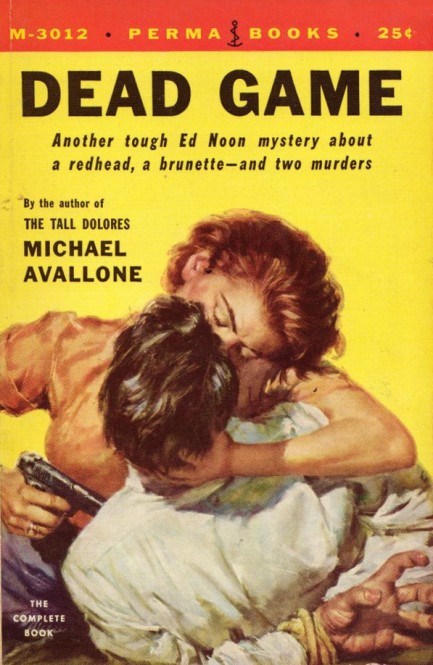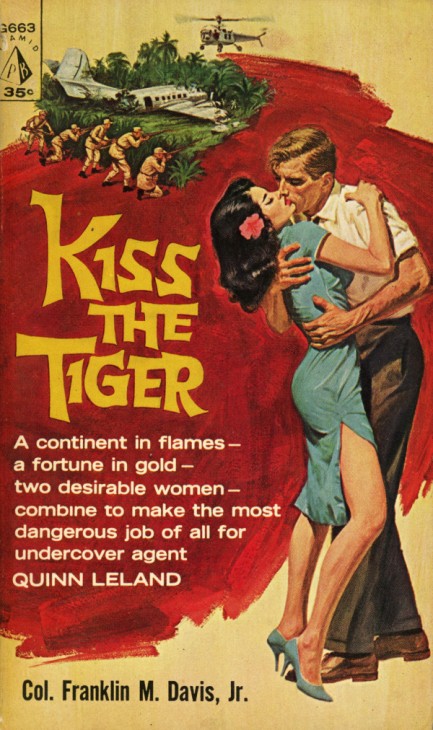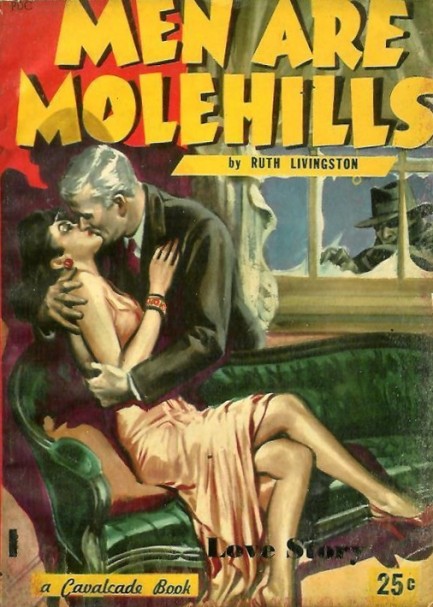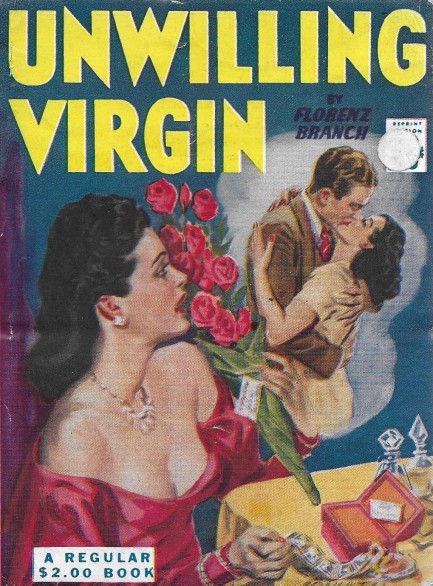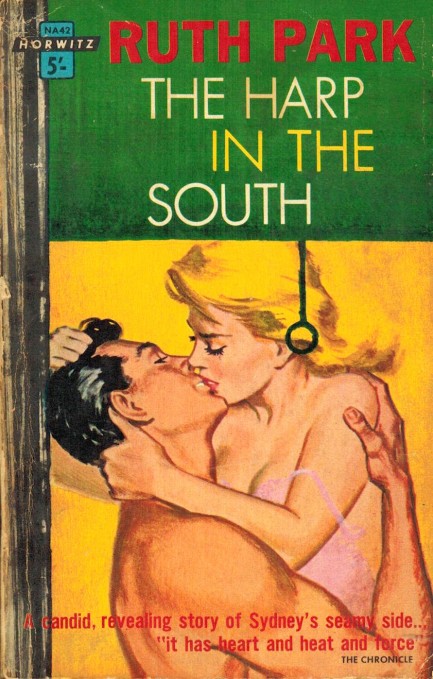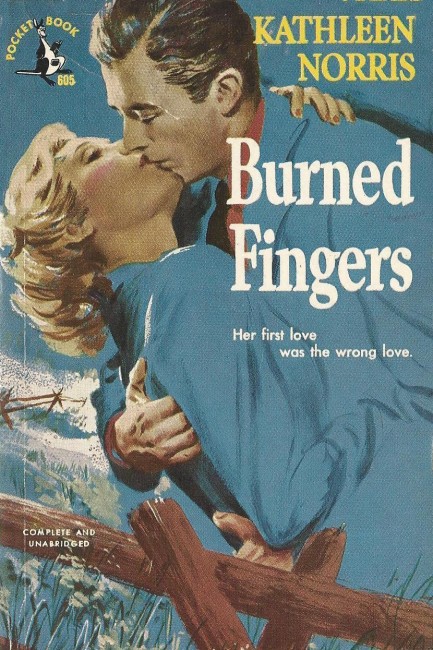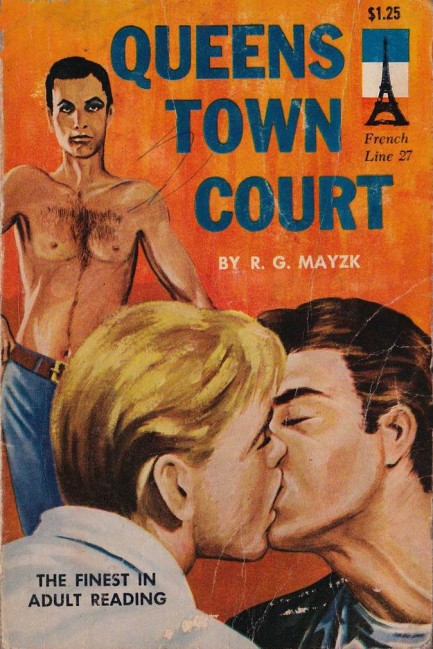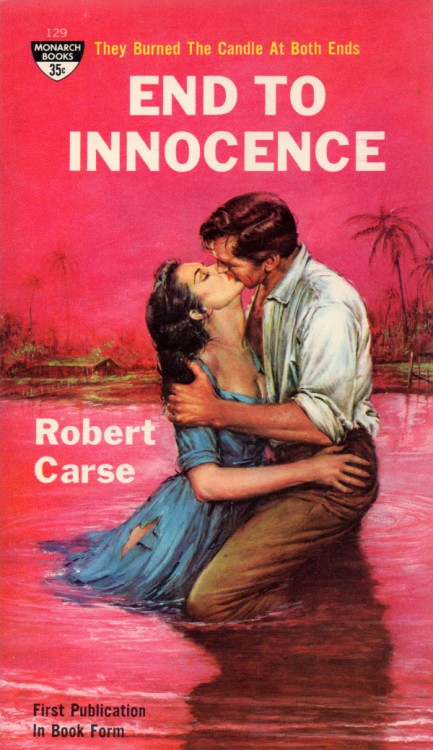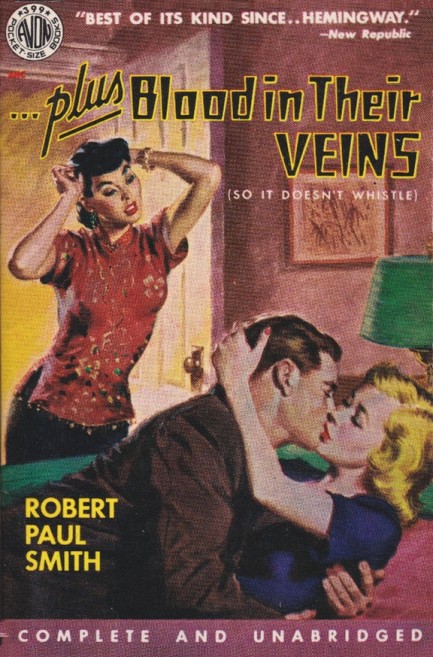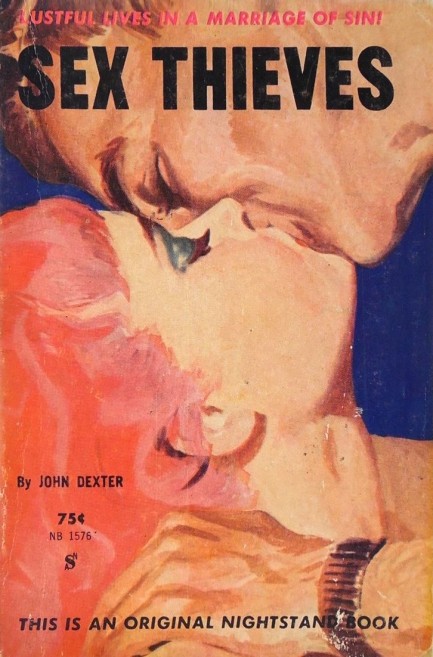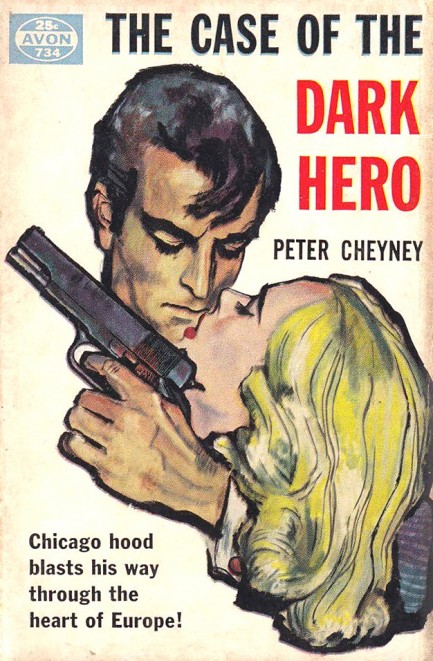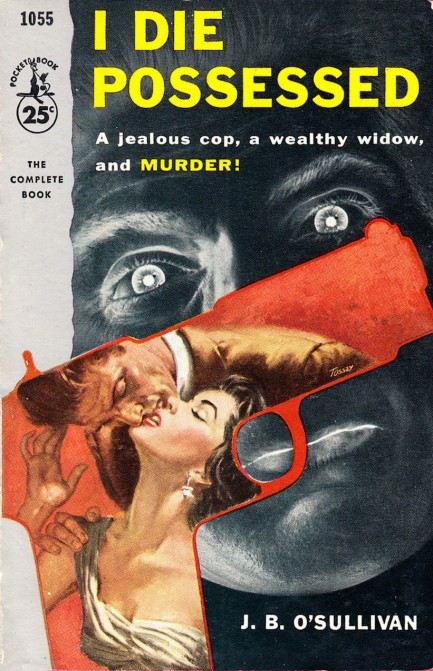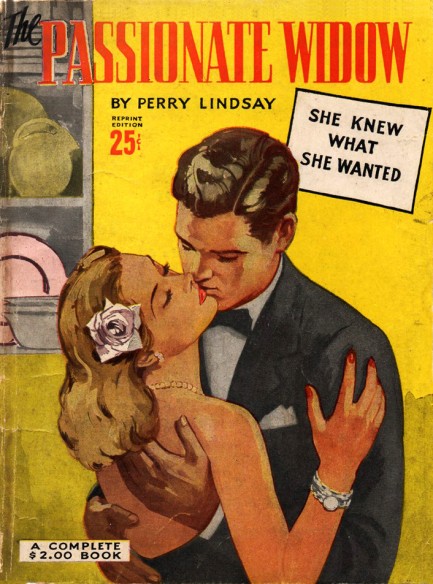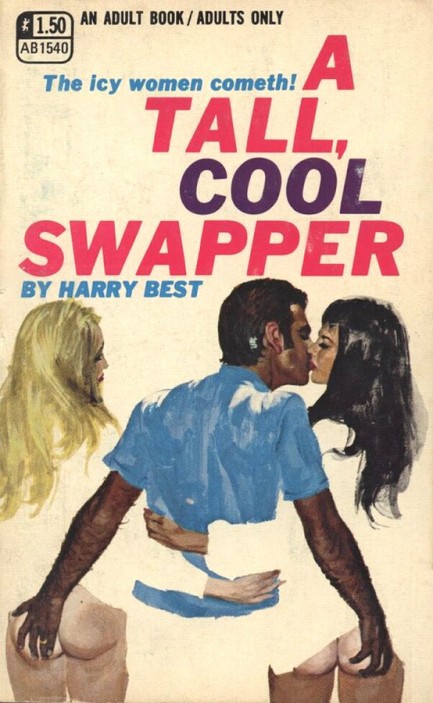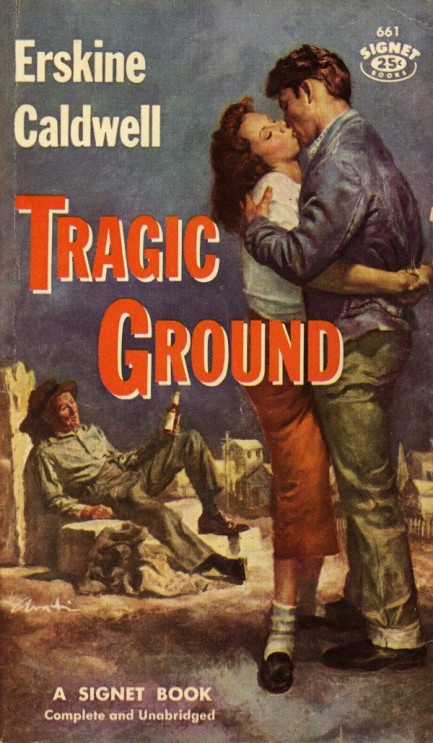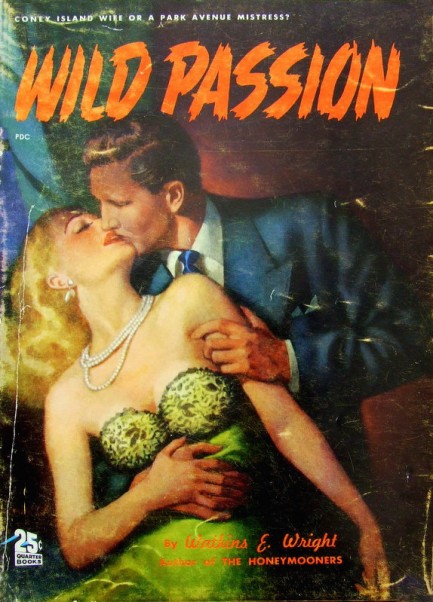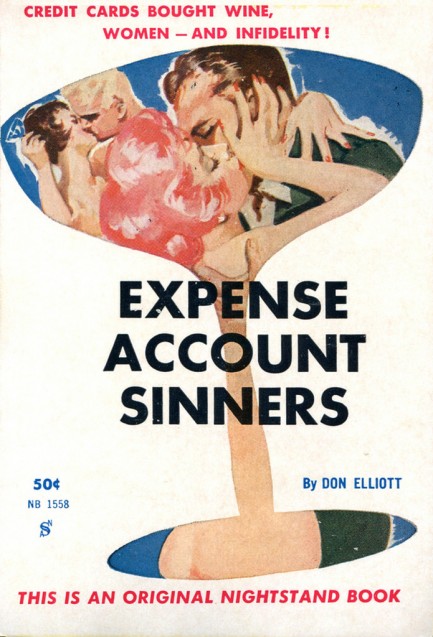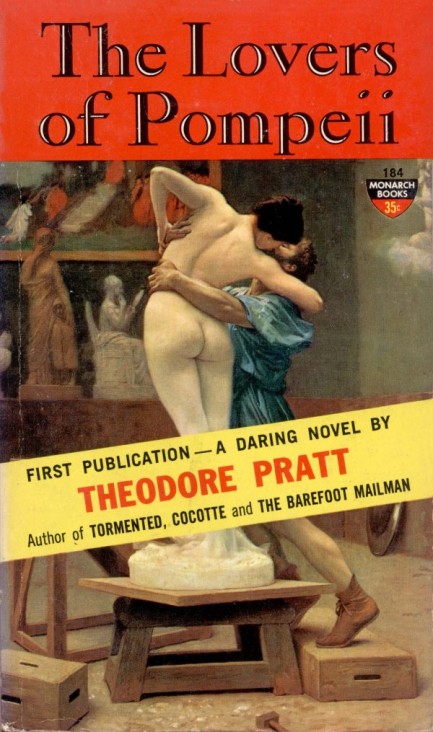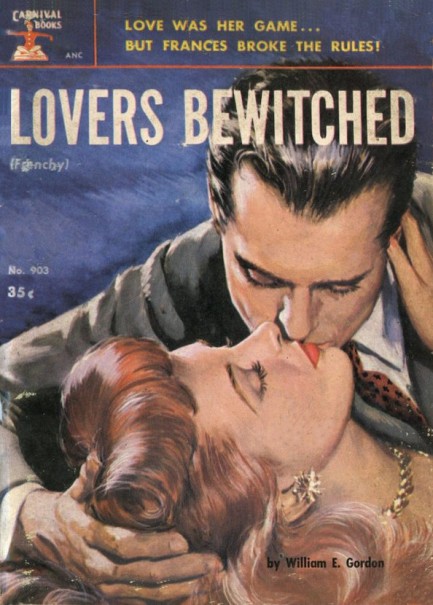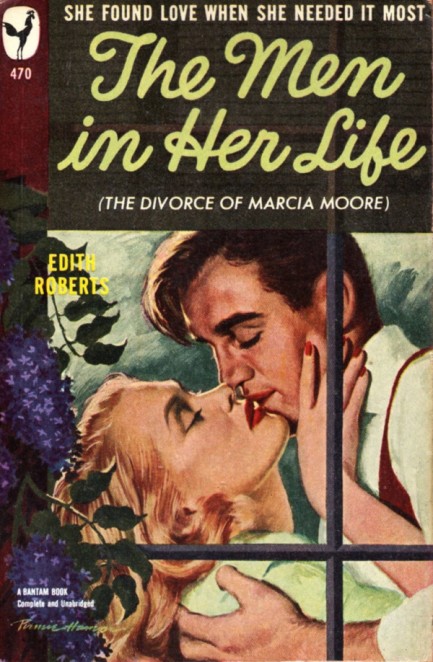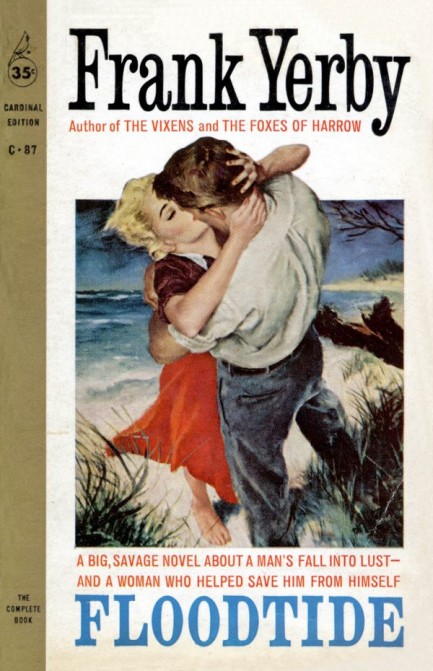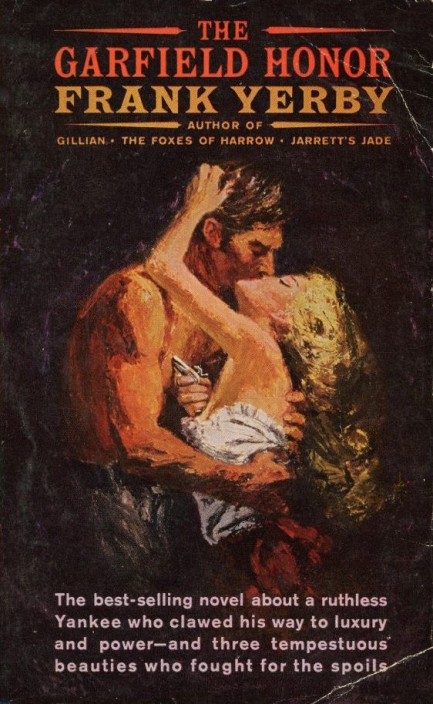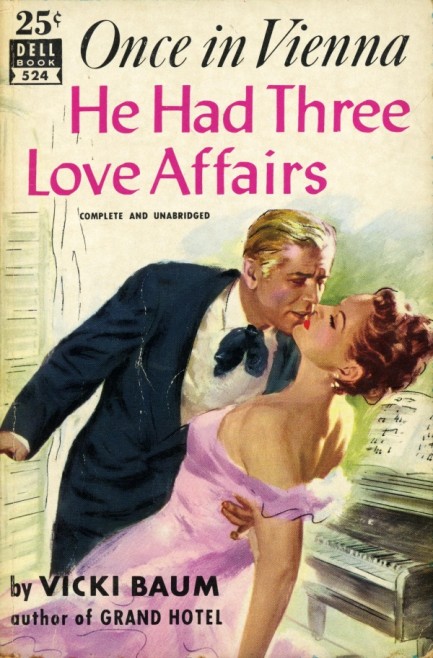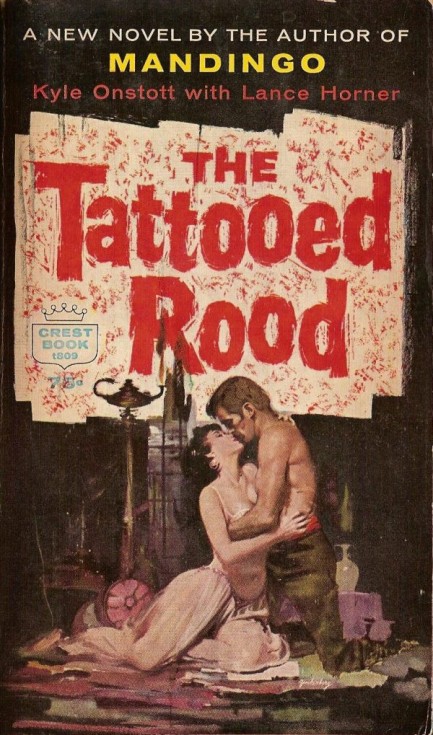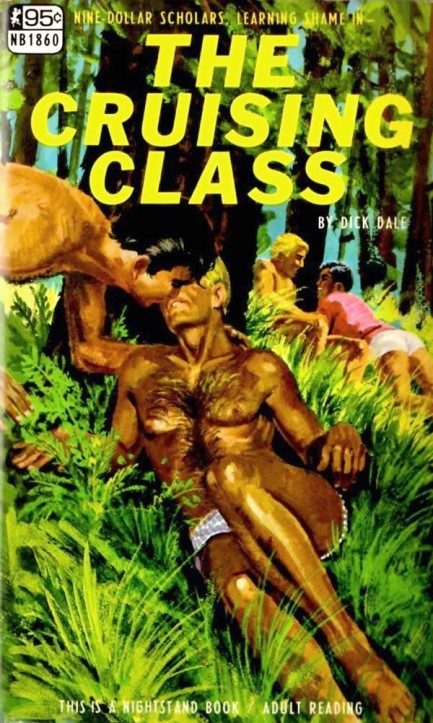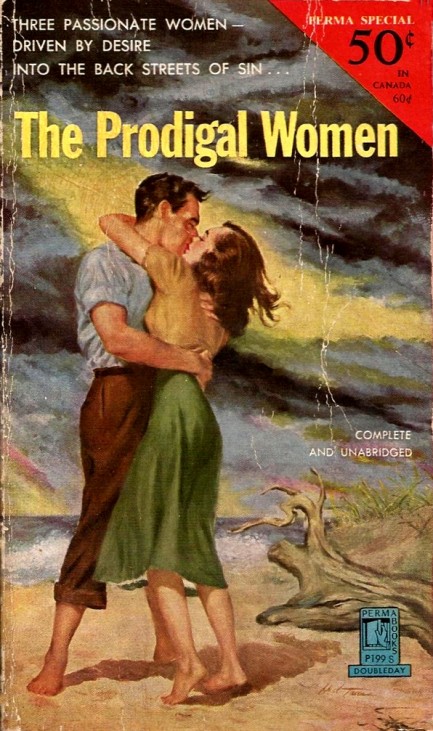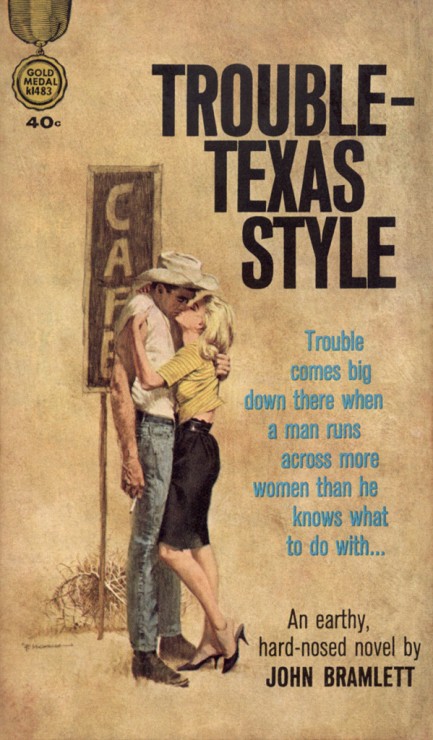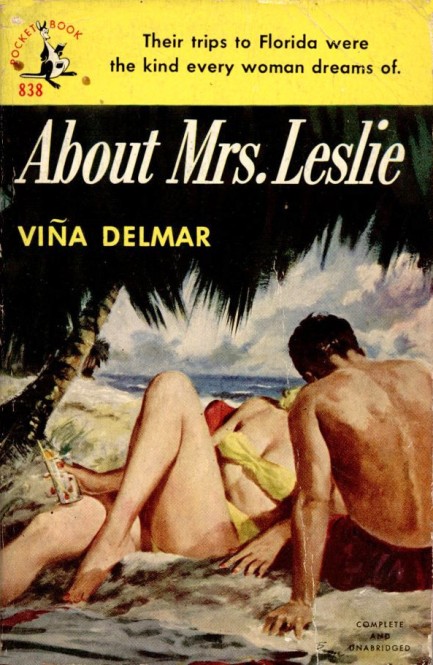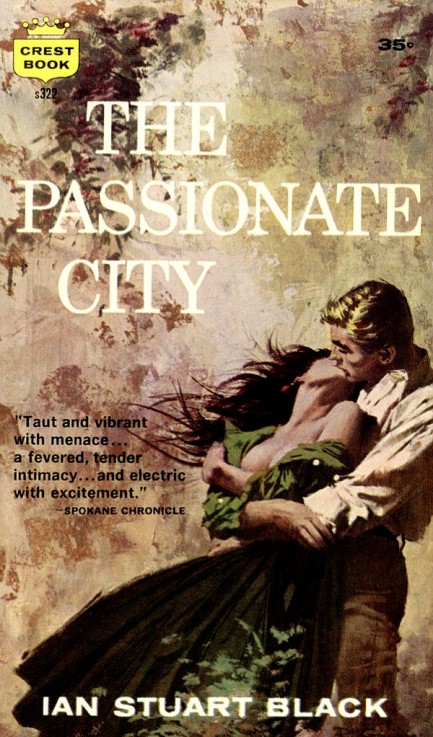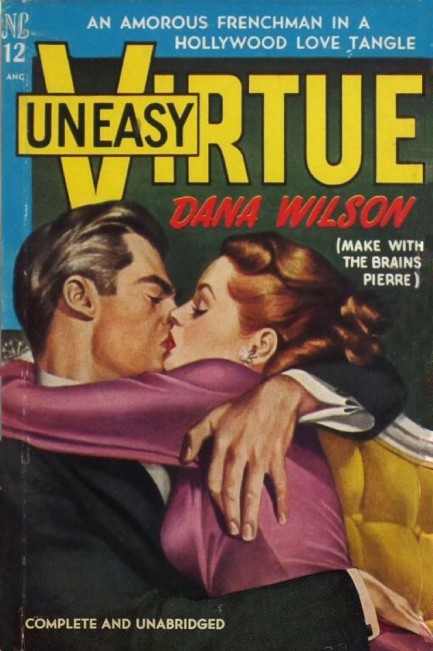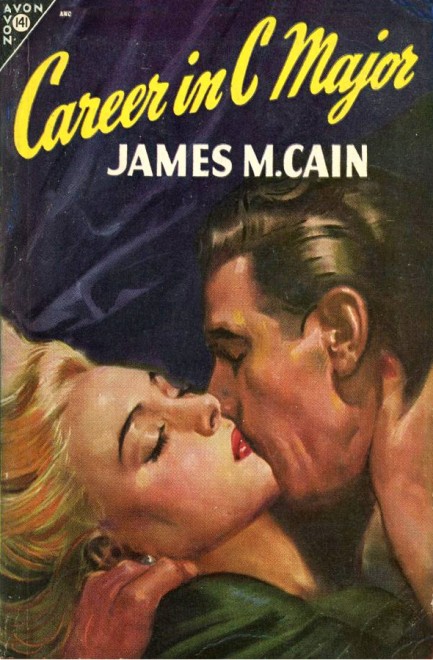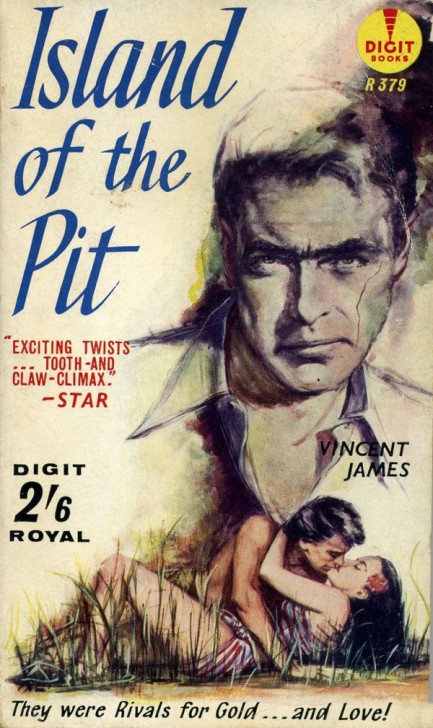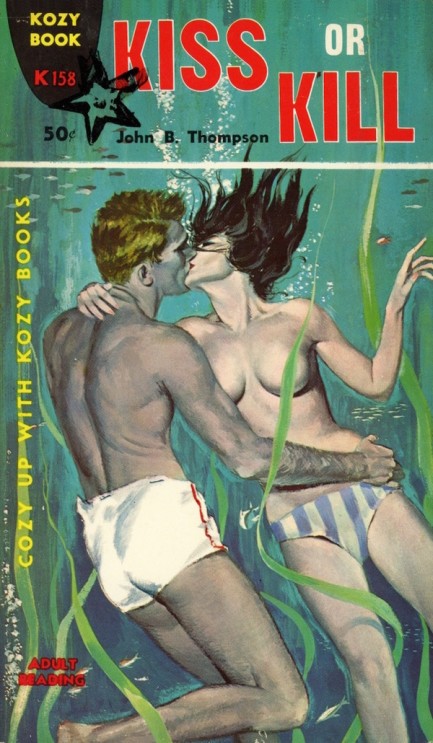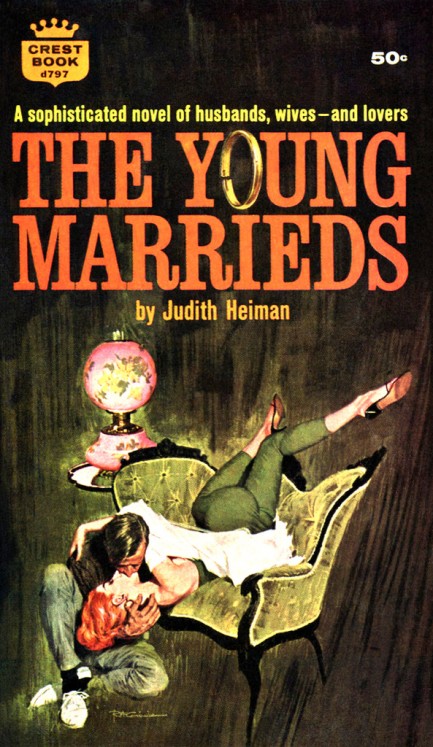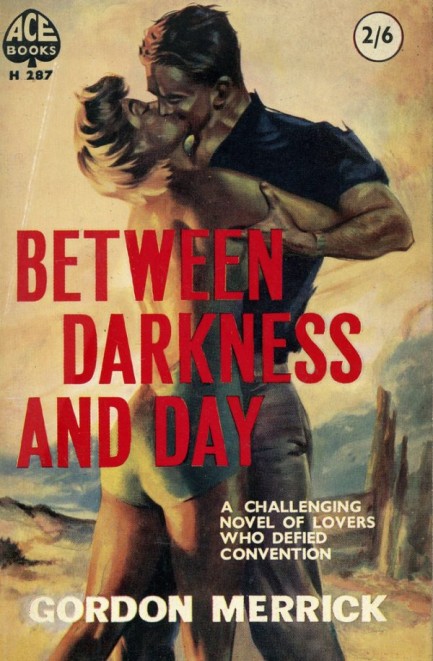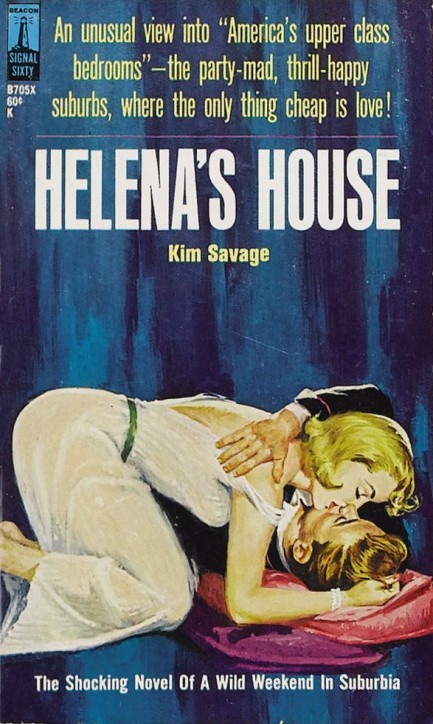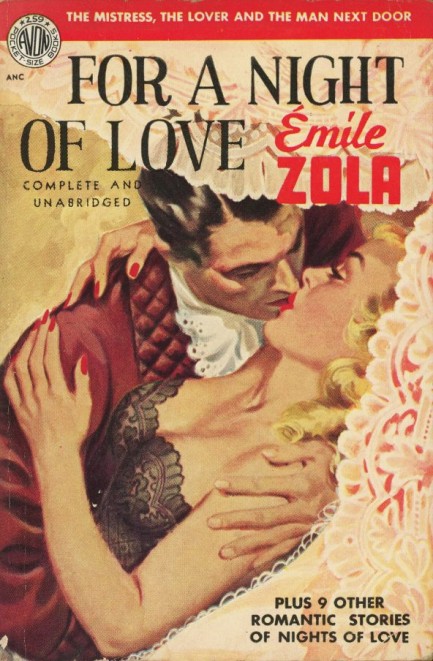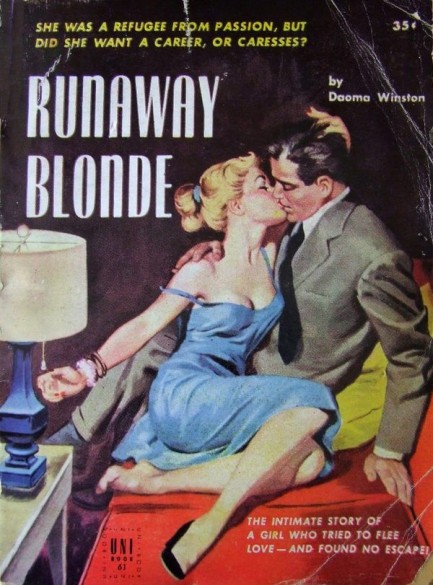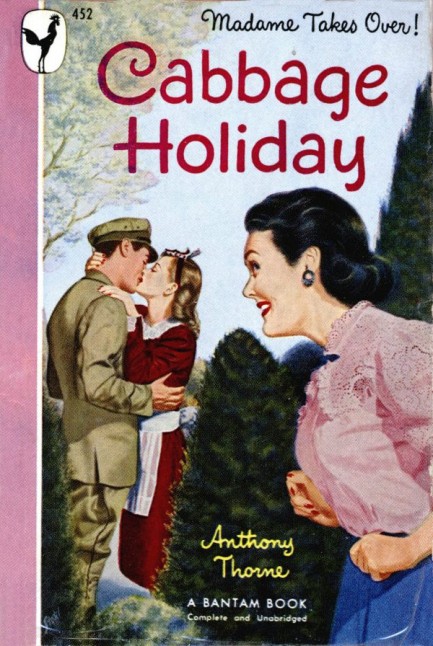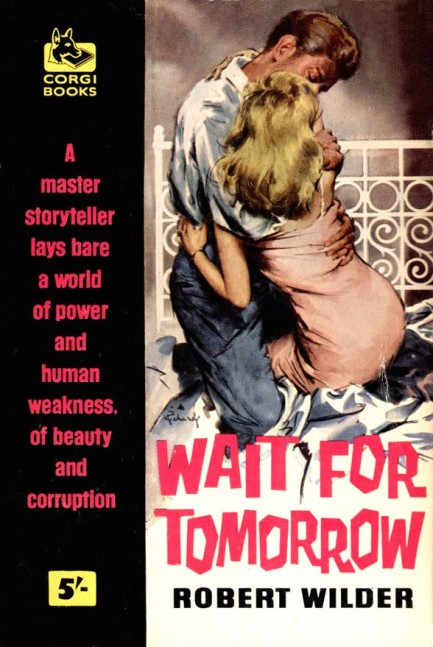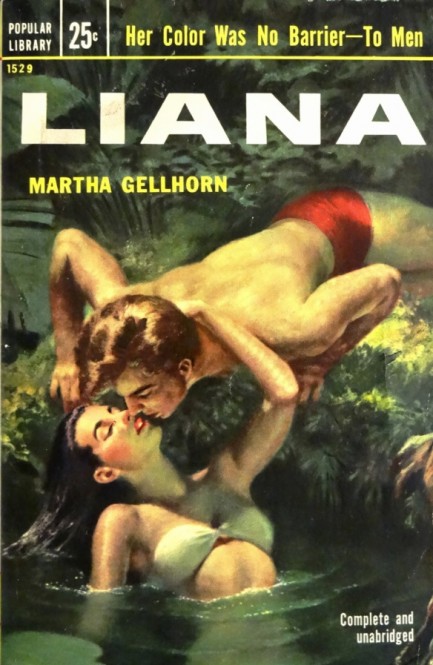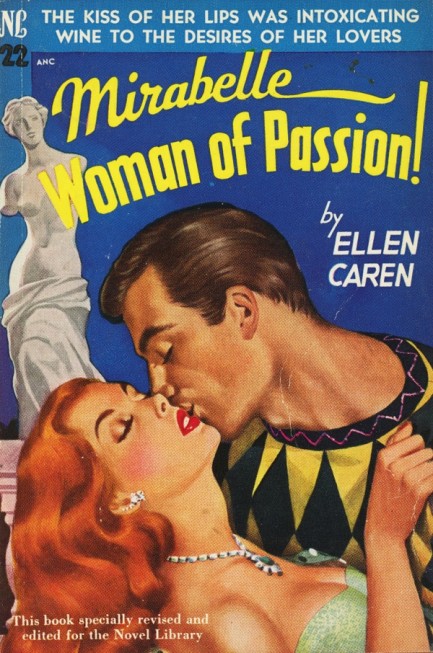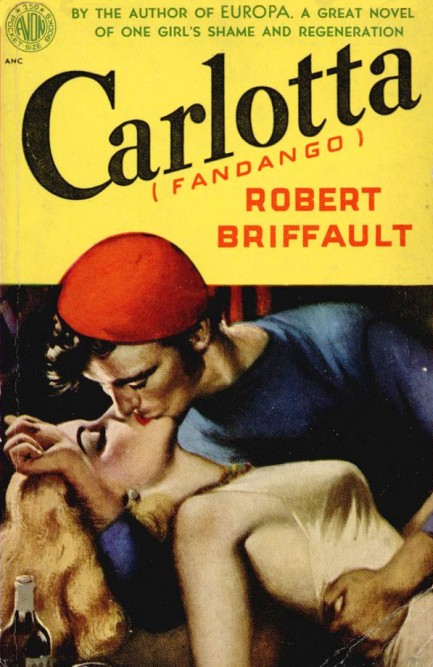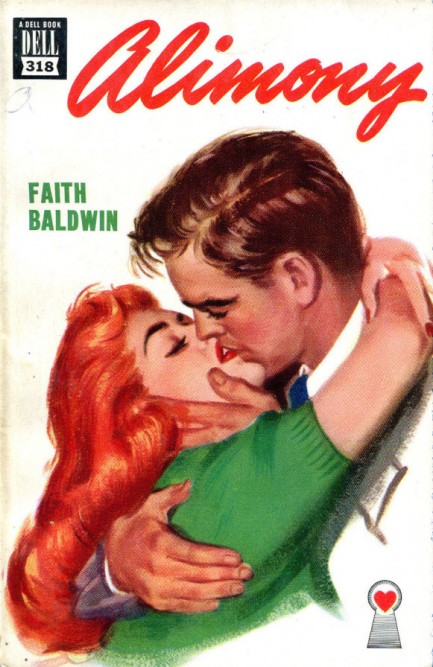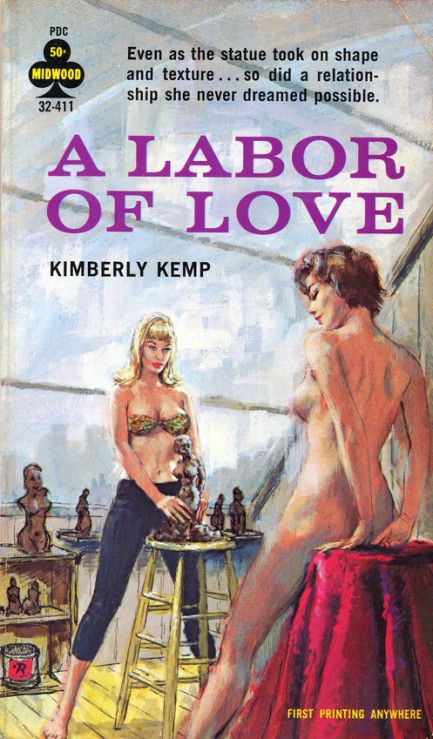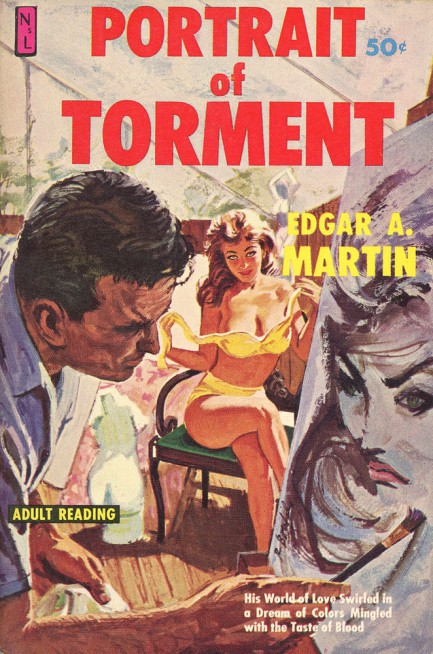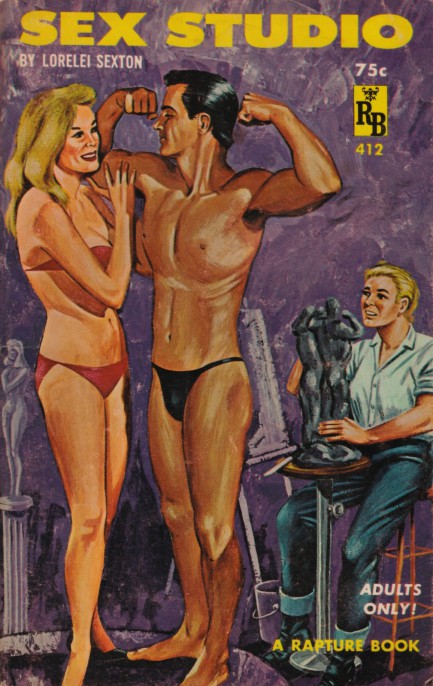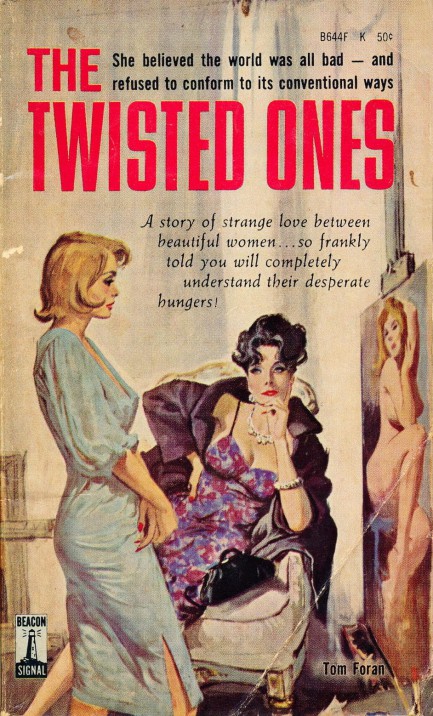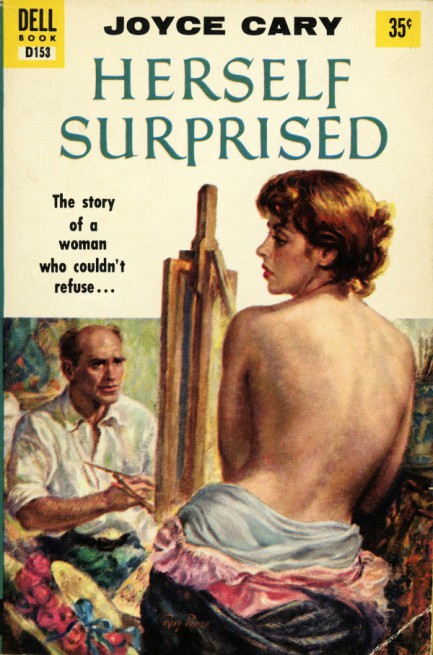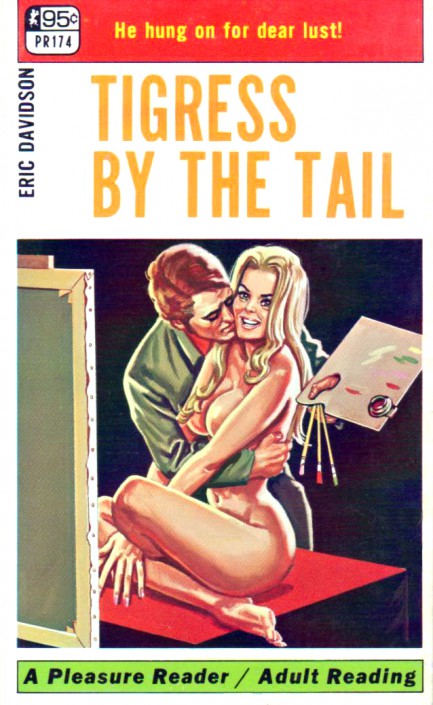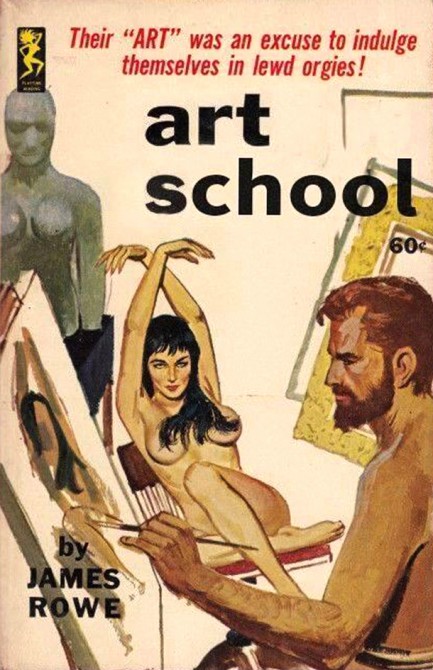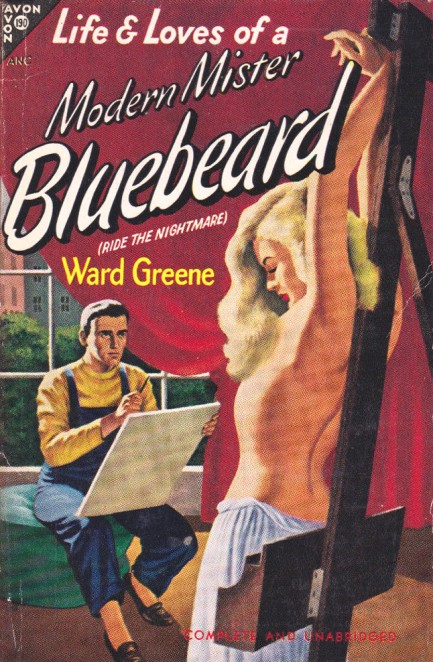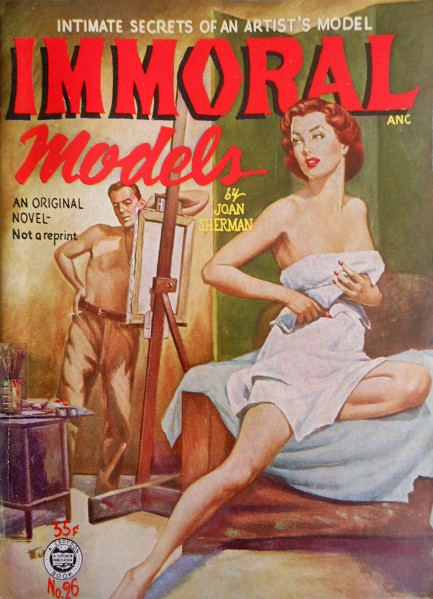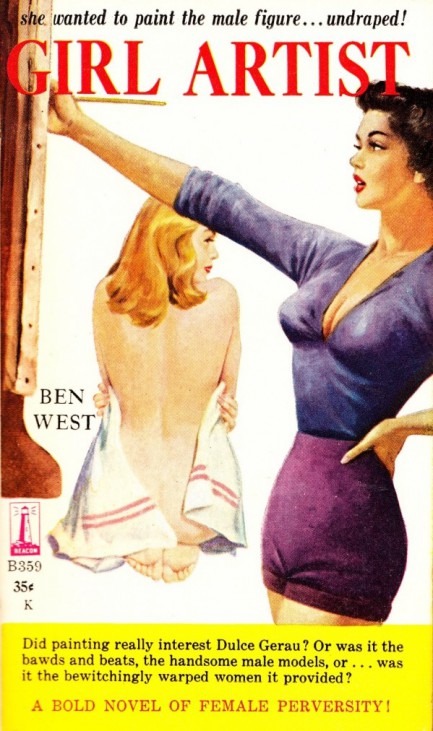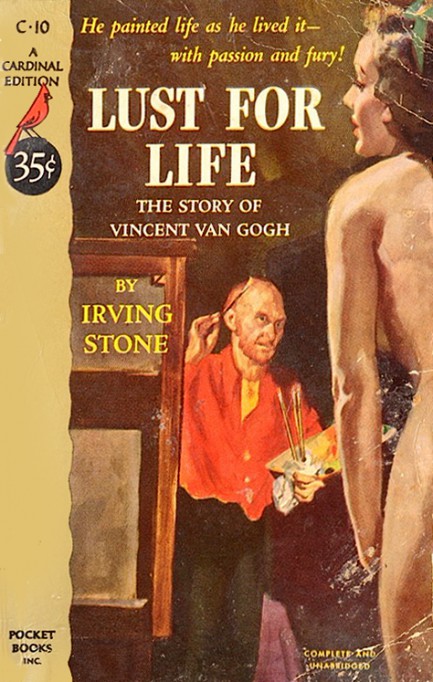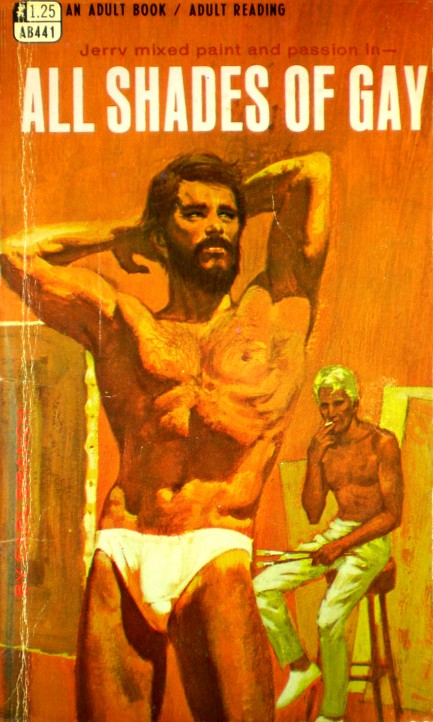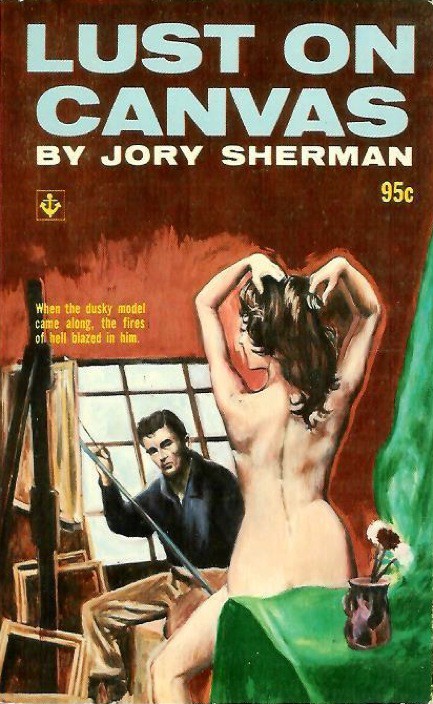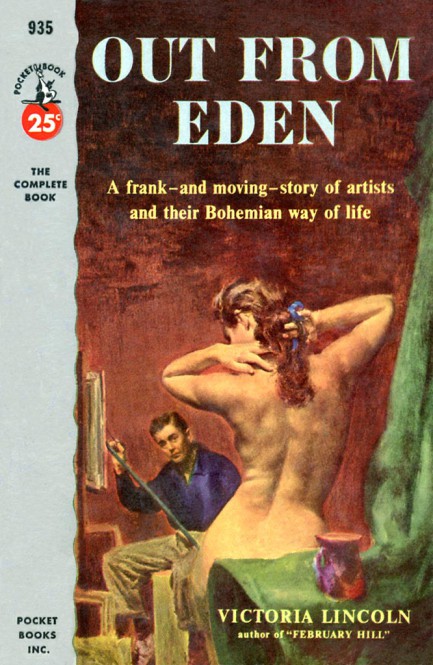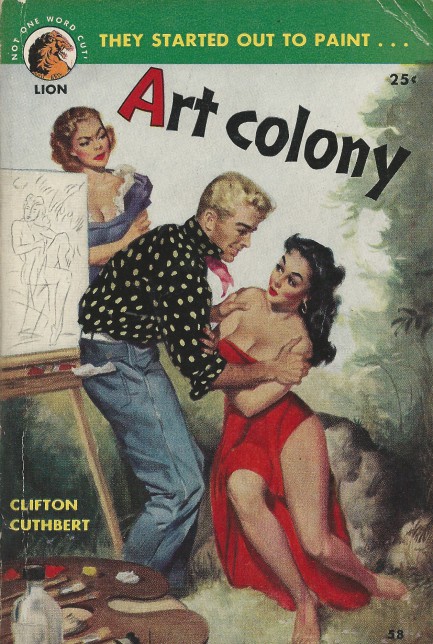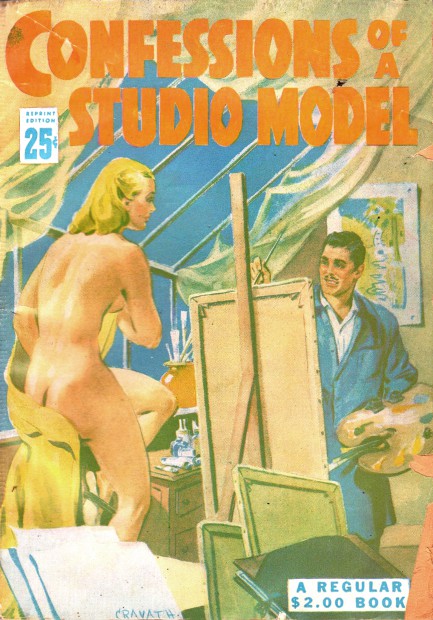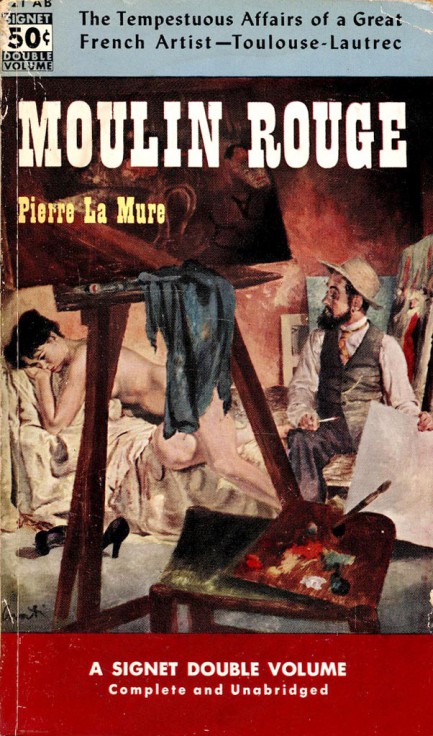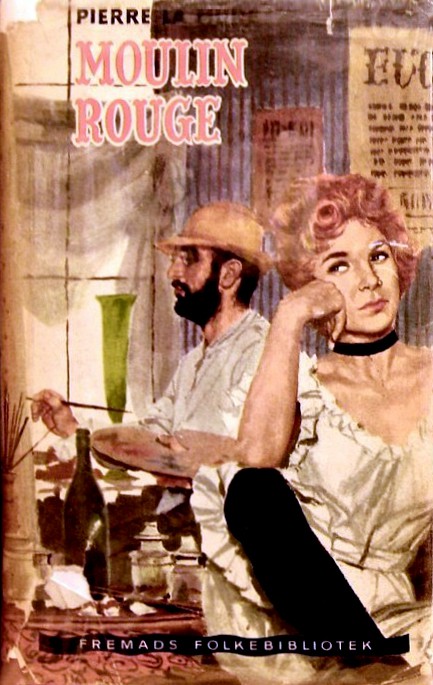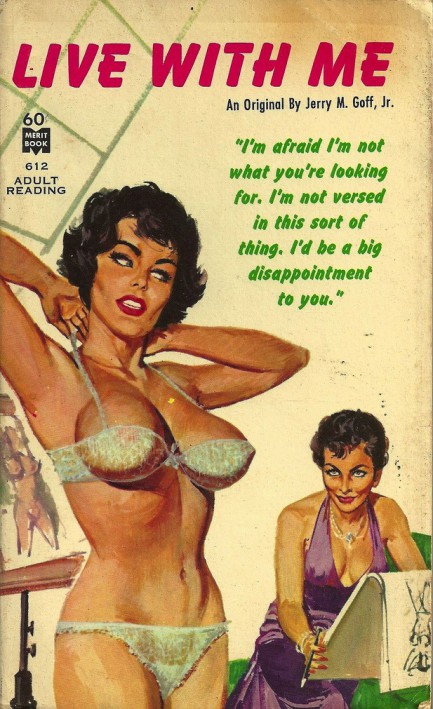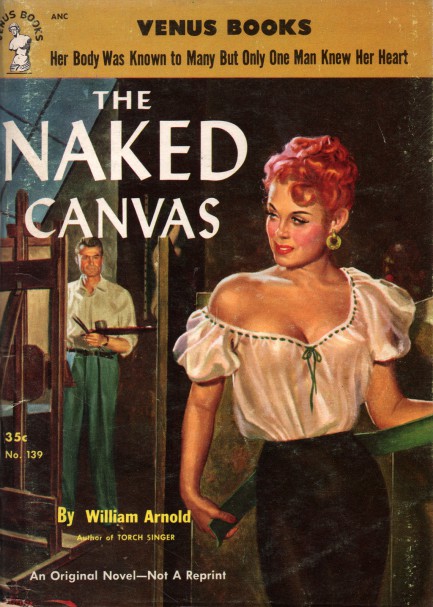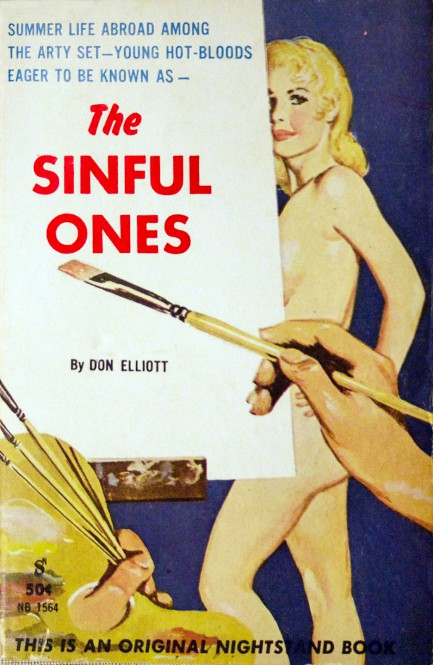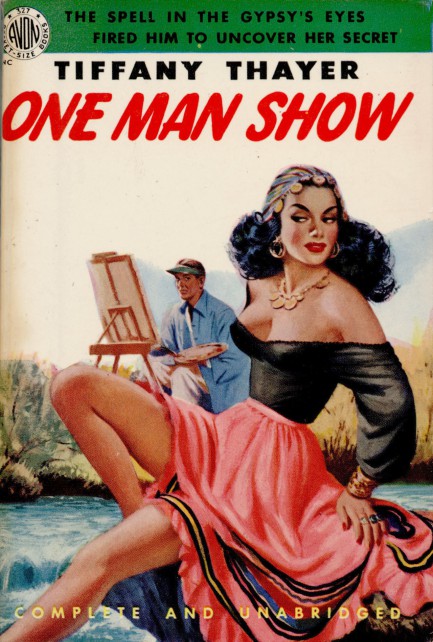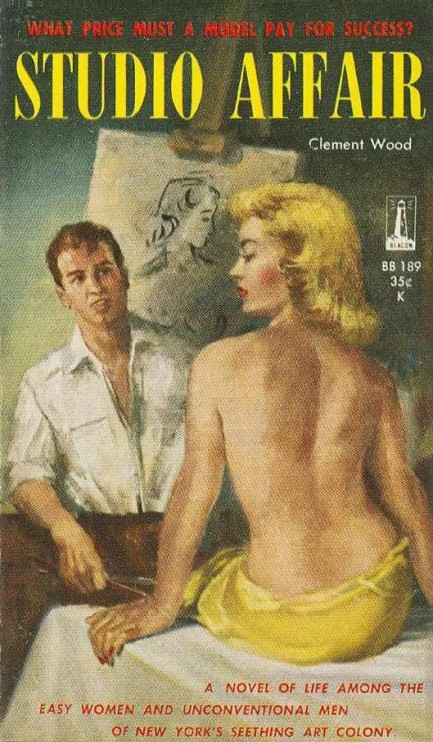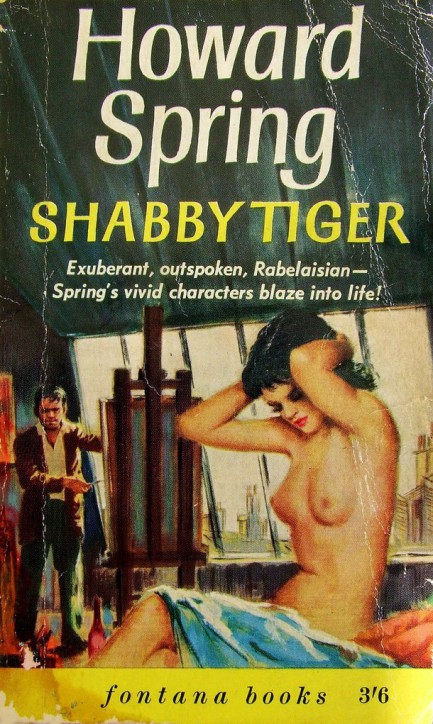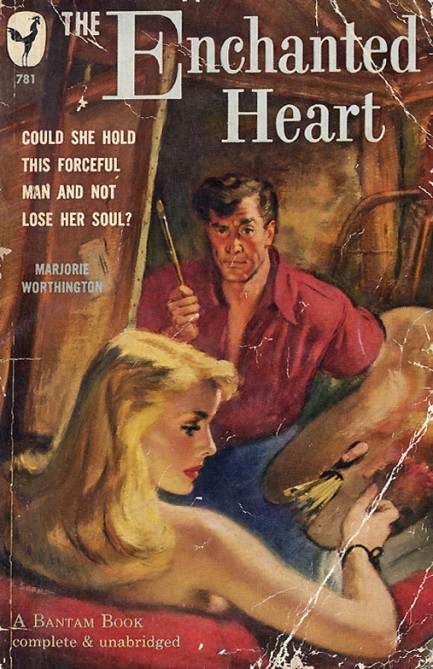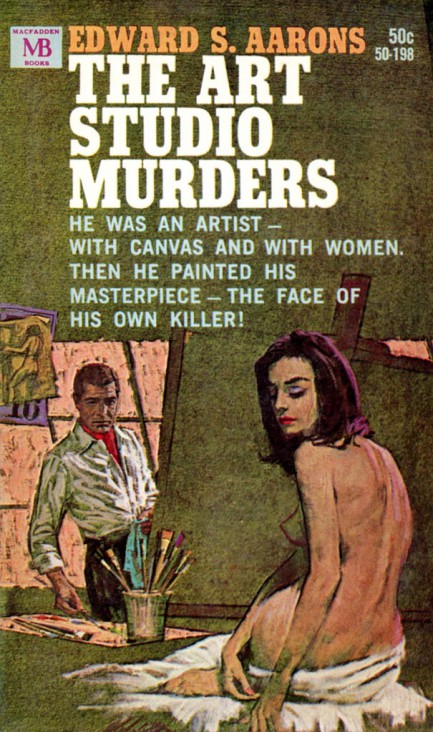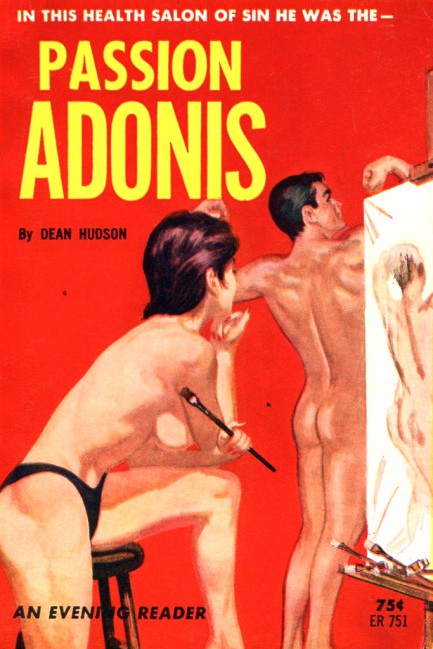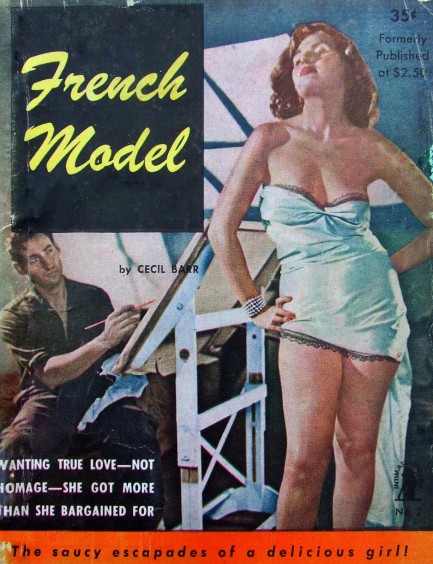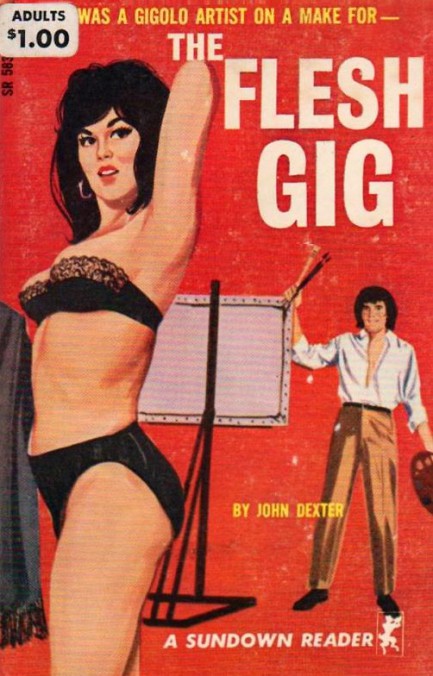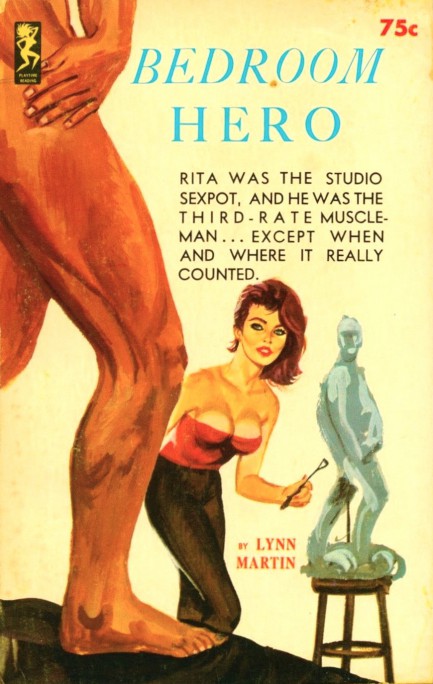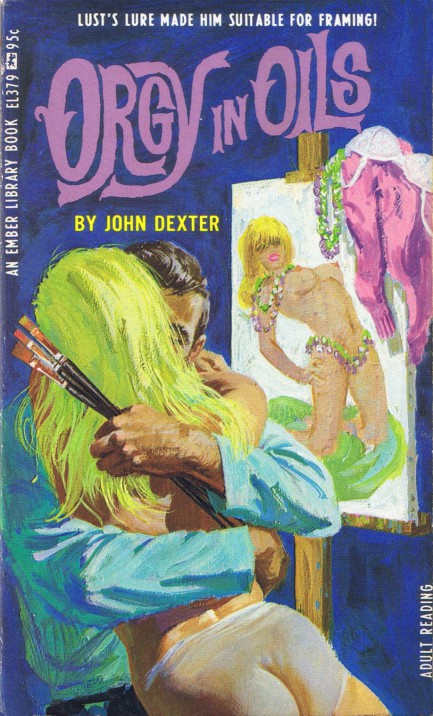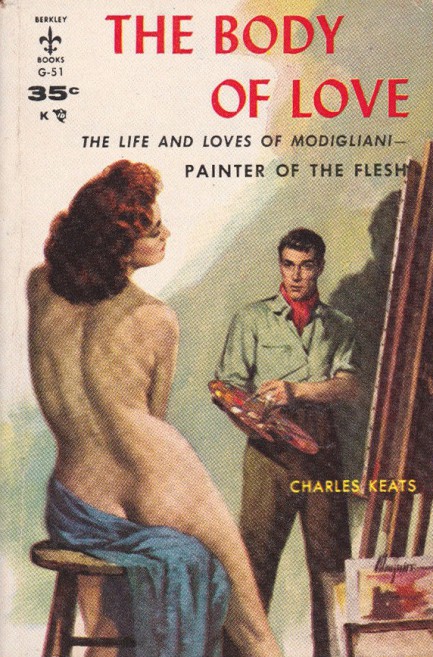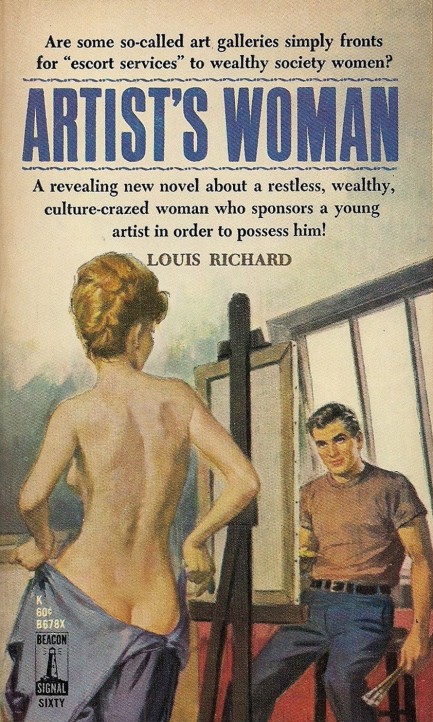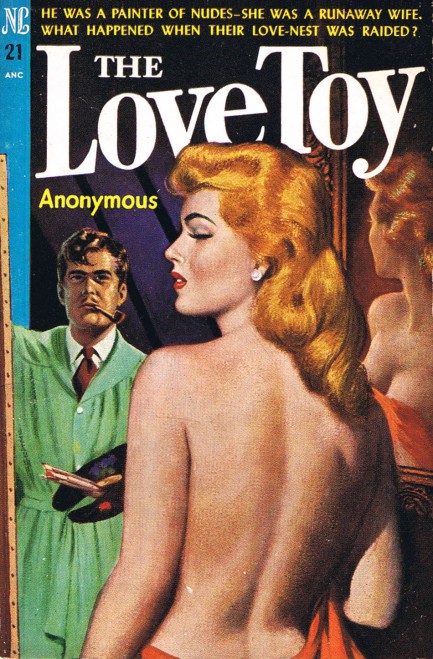 I don't have my degree yet, so for now my recommendation for your sex addiction is to hire a good booking agent. 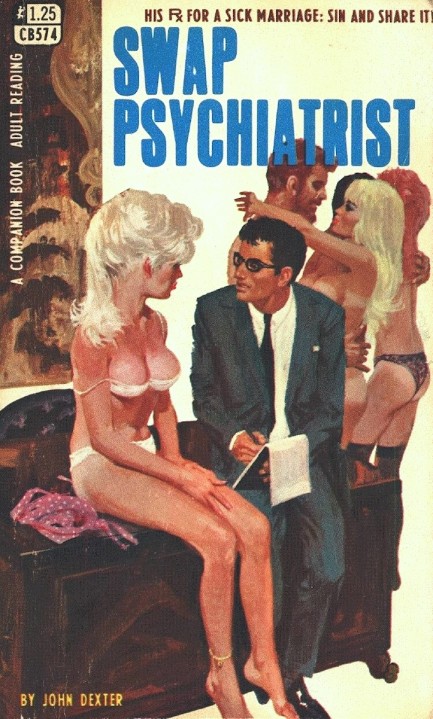
Above: Swap Psychiatrist, from 1968, with art by Robert Bonfils. The author, John Dexter, was credited with three-hundred and fifty books, according to the comprehensive website Greenleaf Classics Books. His name was used as a pseudonym by many, including Lawrence Block, Vivien Kern, Harry Whittington, and others. We have more than a few Dexter covers in the website, but our favorites are here and here.
 Step right up! Step right up! See a sight that'll stun your eyes and electrify your loins! 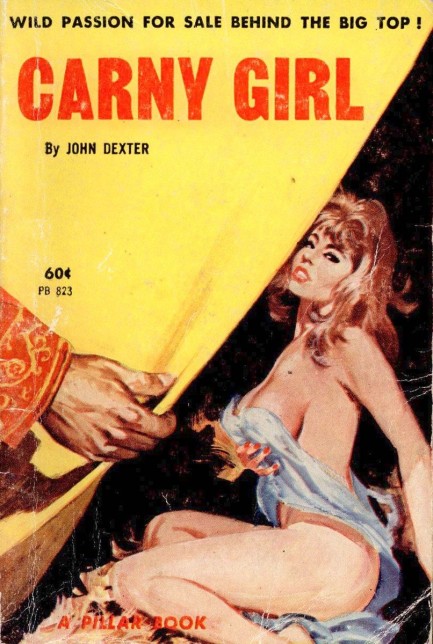
We can't resist carny novels, even if they look as dubious as 1964's Carny Girl by “John Dexter.” The quotations are because Dexter was a pseudonym used by many authors, none of whom are attributable in this case. The book is about beautiful young Julie, who, when readers meet her one late night, is naked and fleeing along a Florida beach from an unknown terror, before taking refuge in a trailer belonging to a traveling carnival. She's found the next day and has no memory of who she is, nor what she fled. The carnies take her along with them and she proves to have an insatiable sexual appetite that leads to all kinds of trouble in their mobile enclave, particularly when she takes a job as one of their strippers. When her memory returns, what awful secrets are revealed? Several, though none that adequately explain why she's such a horny freak, we can promise you. No problem, though—Carny Girl is a sleaze novel, and horny freaks are stock in trade. Of its ilk, it was fine.
 My diagnosis is that you're a nymphomaniac, but I'll need to run a few tests to be sure. 
Psychiatrist sleaze novels are safe havens for us. Whenever we can't think of anything to post, we just grab one of these. They're ridiculous, and easy to riff on. John Dexter's Sin Psycho was published by Greenleaf Classics and it appeared in 1962 with unattributed art. We don't keyword for “therapy” or “psychiatrist,” so we can't point you to all the others in this style we've posted, but you can see most of them by starting here.
 I'll have to call you back. Something urgent just landed on my desk. 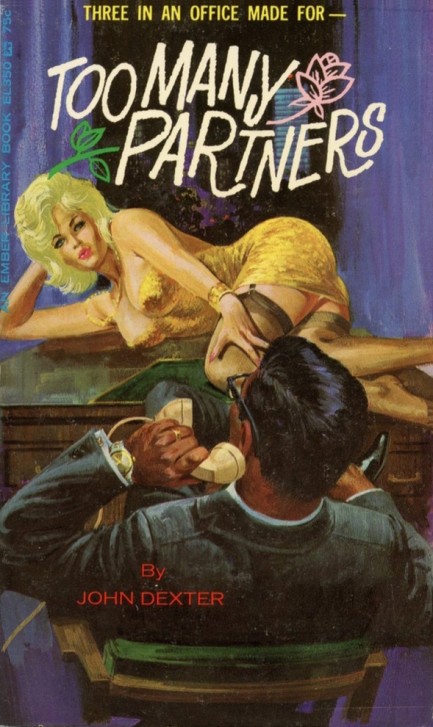
Above, yet another office sleaze cover from Greenleaf Classics, that most reliable of low rent imprints. Too Many Partners was written by John Dexter, a pseudonym for various authors, in this case one who remains unidentified. This was published in 1966 with Robert Bonfils art.
 Baby, I don’t mind you calling my chest an A-cup, but can you stop calling my penis an A-cup too? "You actually make a pretty hot chick,” she says, smiling.
“Why are you smiling?”
“I’m not smiling,” she says, laughing.
“You’re laughing at me.”
“I’m not laughing,” she says, hyperventilating.
“Okay, screw this! I didn’t want to do this anyway!”
 This? This isn’t big. My first one said, “Property of Madame X’s Torture Dungeon—all rights reserved.” That was big. 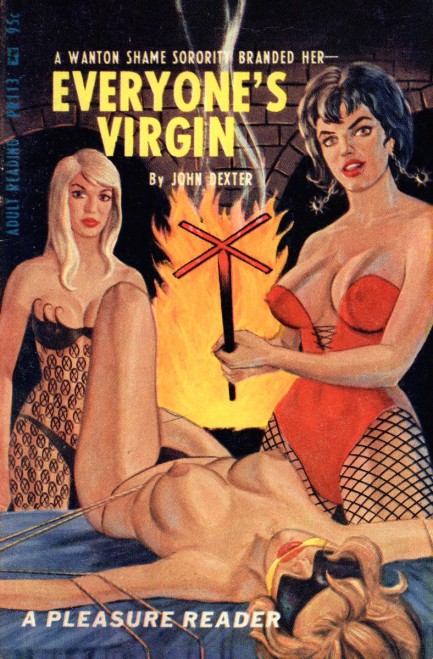
Above, a cover for Everyone’s Virgin by John Dexter, for Greenleaf Classics, 1967. We’ve talked about the non-existent Dexter several times. This effort is about two young women who pretend to be innocent in order to lure older men into sex, whereupon they blackmail the silly horndogs. We aren’t sure where the branding fits in, but it makes for a fun cover. Thank artist Ed Smith.
 Well, okay—since you say it worked for Tom Brady, I guess I can take some of the pressure out of your balls.
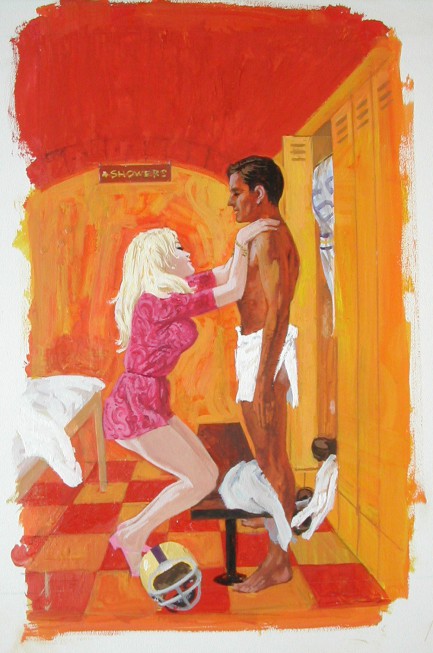 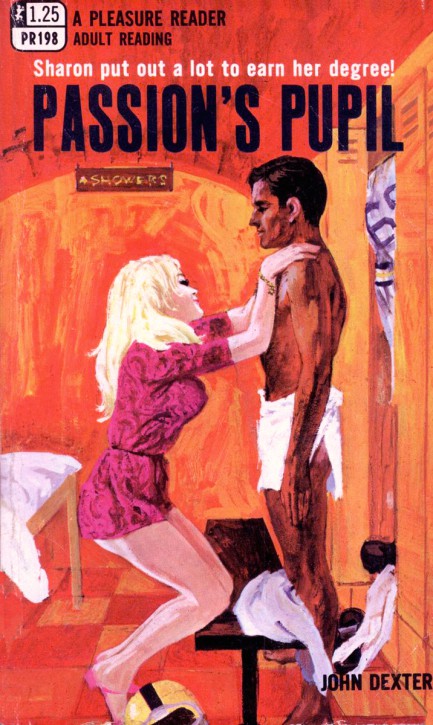
The original painting at top, which we ran across on an auction site, was made for the cover of John Dexter’s (Harvey Hornwood’s) 1969 sleaze novel Passion’s Pupil, just above. Like most covers from the genre, it has several raunchy elements. Not only is the femme fatale threatening to go down on her knees, and not only has the football star found the world’s smallest towel (which we guess will make her next manuver even easier), but the jersey peeking out of his locker seems to bear the number 69. Standard stuff. But what isn’t standard is there may be some question about who painted this. According to the vendor selling it—for $800.00, in case you’re looking for something to go above your mantel—the piece is by Robert Bonfils, however, the quite authoritative Greenleaf Classics Books website has this attributed to Darrel Millsap. The two had nearly identical styles during the time they worked for Greenleaf, so there’s no way to look at the painting and discern whose it is, and there’s no signature on the front or rear. We’re sure the mystery will be solved at some point, though, probably by whoever eventually shells out eight bills for the art. We like the painting not only on its own sleazy merits, but because it reminds us of another original painting we posted way back that was used for the front of Amy Harris’s schoolhouse sleaze novel Prize Pupil. In fact, if you click back there you’ll see that the male figures in both scenes are weirdly similar. And of course so are the titles of the books. Did Bonfils/Millsap use that earlier cover as inspiration? It sure looks like it.
 Vintage paperback violence gets up close and personal. 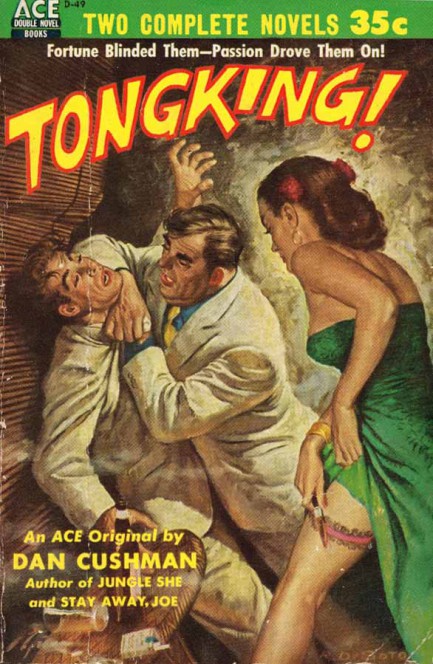
We have another collection today as we prepare to jet away on vacation with the girls. Since the place we’re going is known for rowdy British tourists (what place isn’t known for that?), we thought we’d feature some of the numerous paperback covers featuring fights. You’ll notice, as with our last collection, the preponderance of French books. Parisian publishers loved this theme. The difference, as opposed to American publishers, is that you almost never saw women actually being hit on French covers (we’d almost go so far as to say it never happened, but we’ve obviously not seen every French paperback ever printed). The French preferred man-on-man violence, and when women were involved, they were either acquitting themselves nicely, or often winning via the use of sharp or blunt instruments. Violence against women is and has always been a serious problem in the real world, but we’re just looking at products of the imagination here, which themselves represent products of the imagination known as fiction. Content-wise, mid-century authors generally frowned upon violence toward women even if they wrote it into their novels. Conversely, the cover art, stripped of literary context, seemed to glorify it. Since cover art is designed to entice readers, there’s a valid discussion here about why anti-woman violence was deemed attractive on mid-century paperback fronts, and whether its disappearance indicates an understanding of its wrongness, or merely a cynical realization that it can no longer be shown without consequences. We have another fighting cover here, and you may also want to check out our western brawls here.
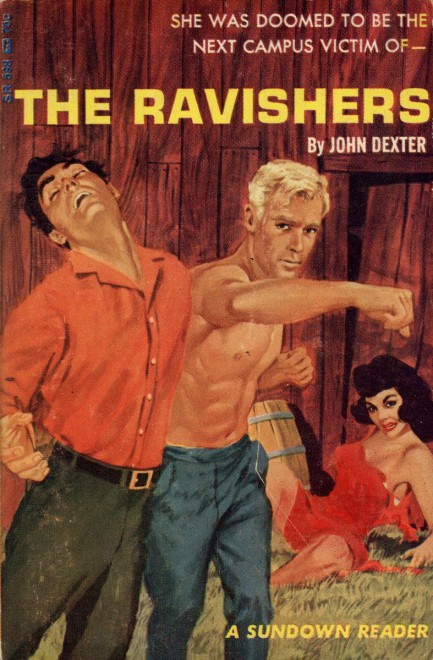 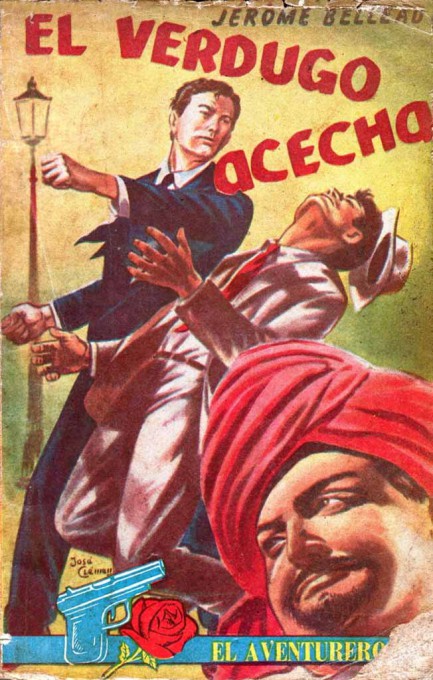 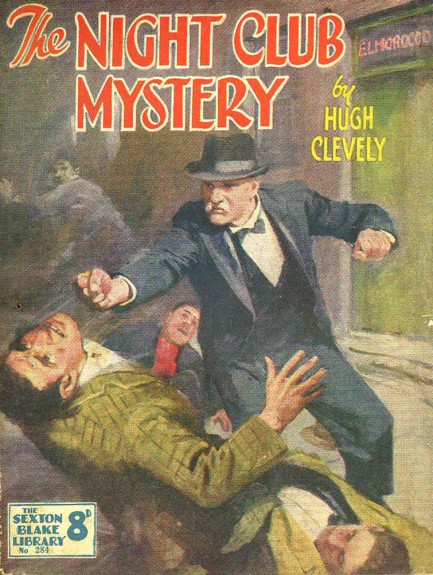  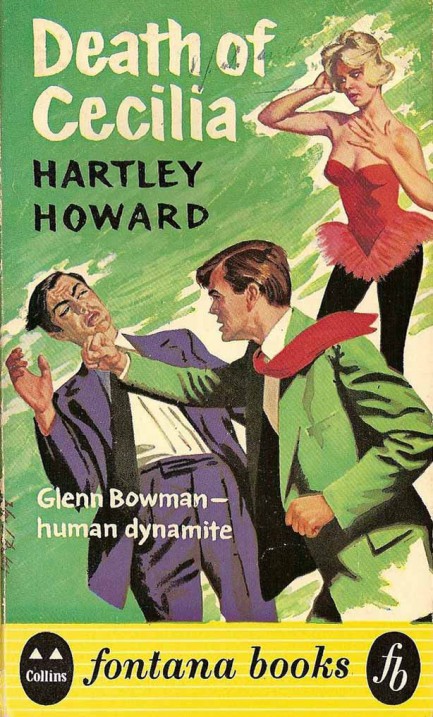 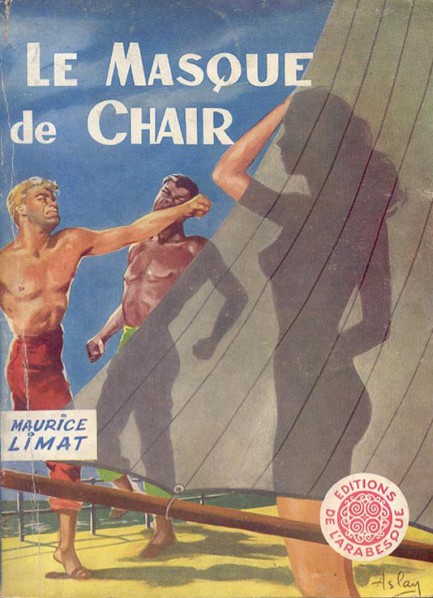 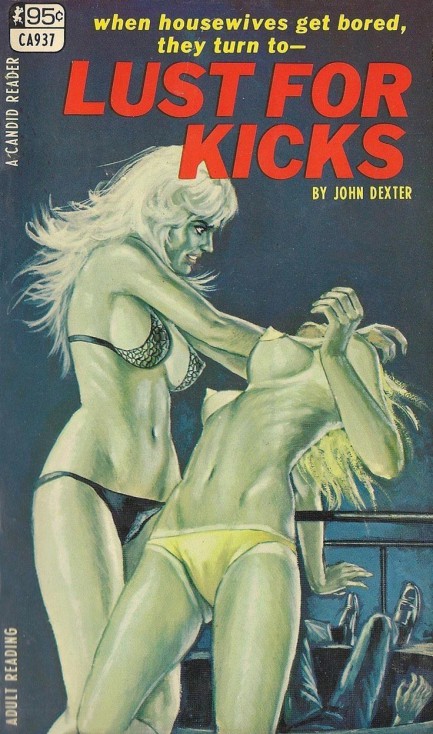 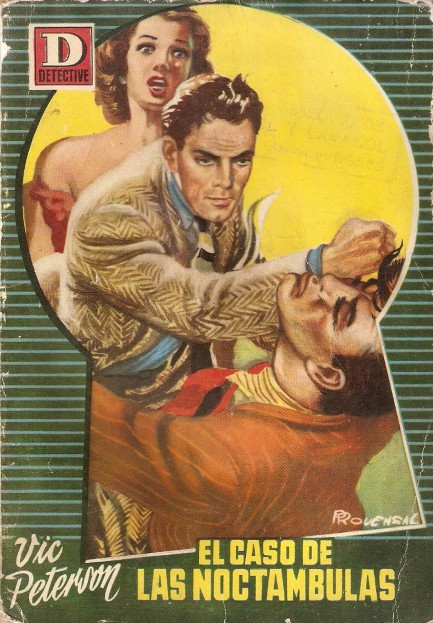 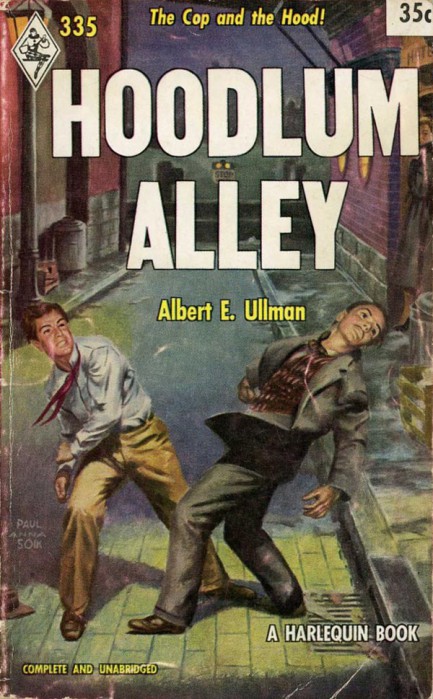 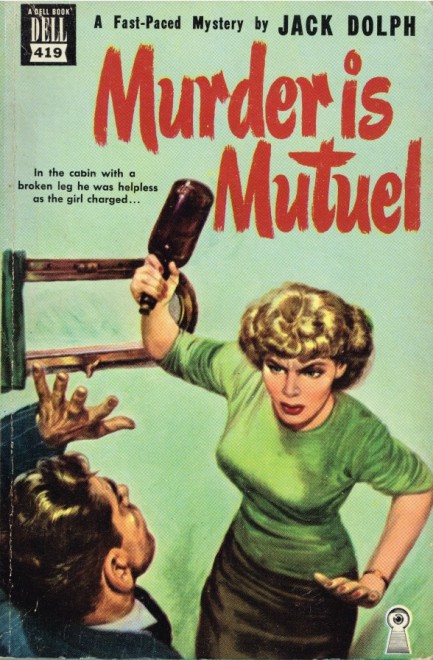 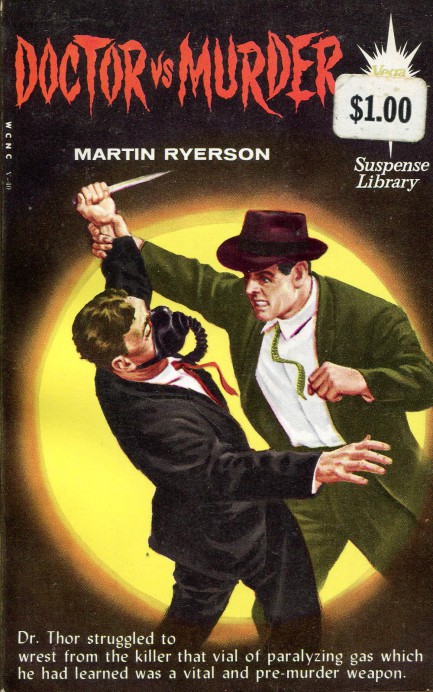 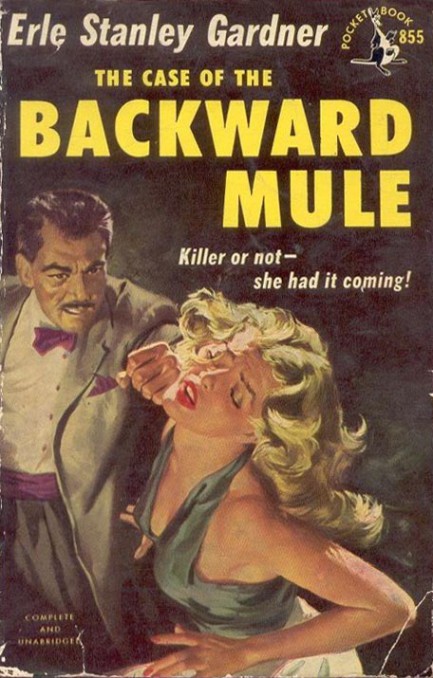 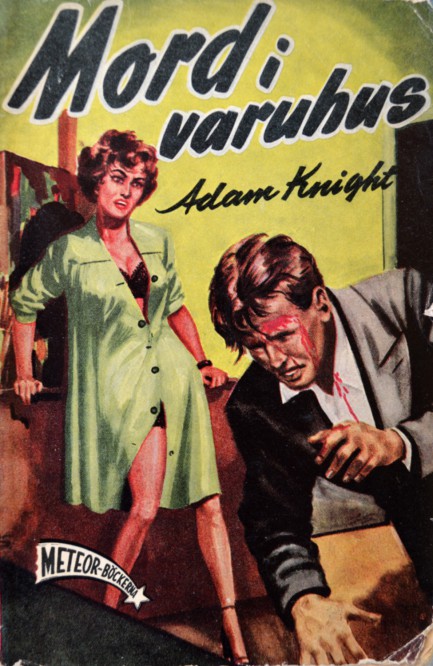 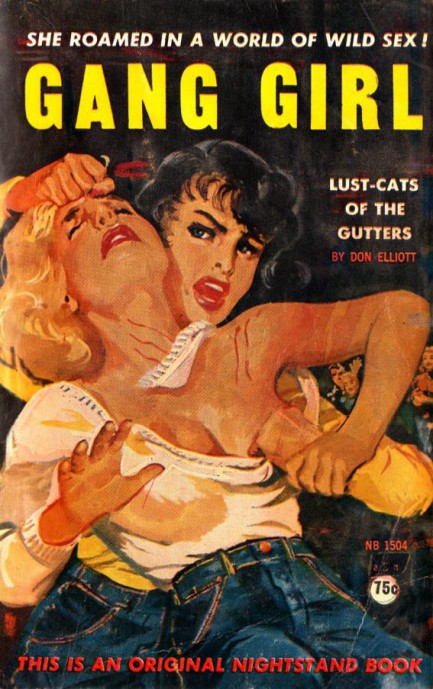 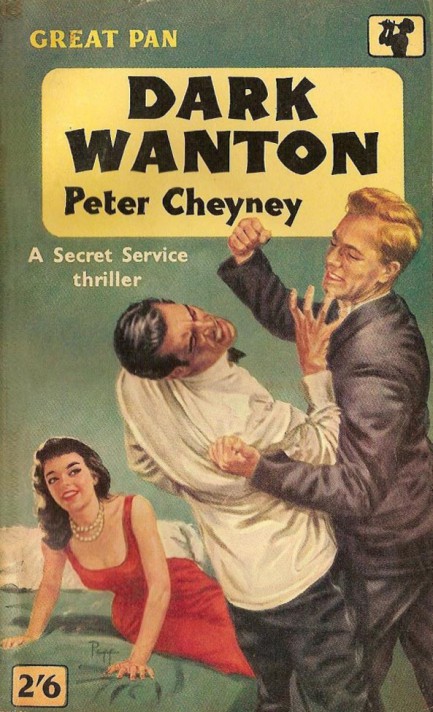 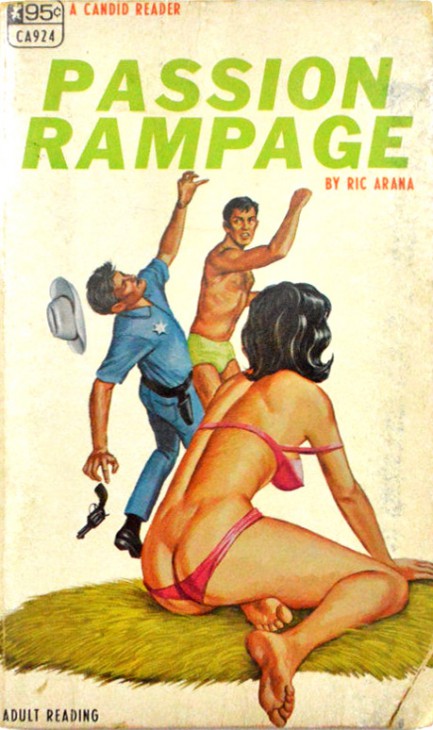 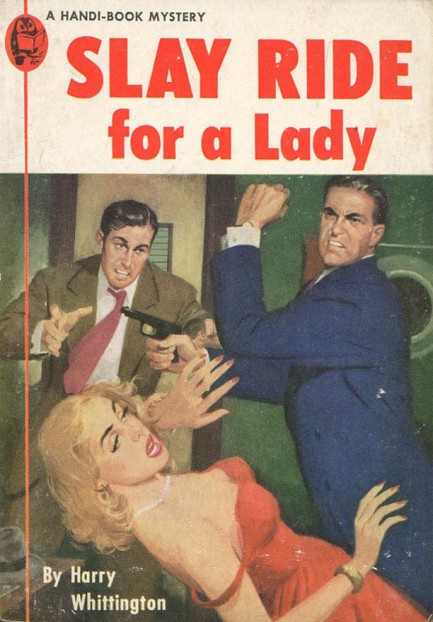  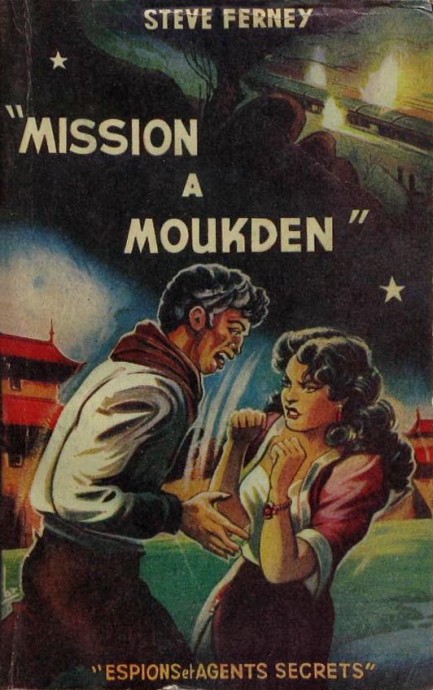 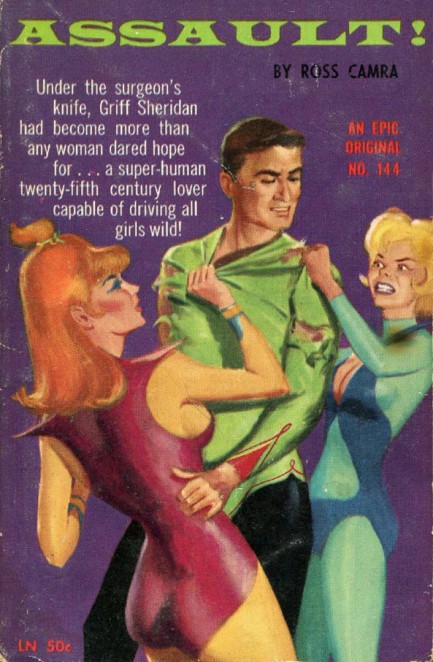 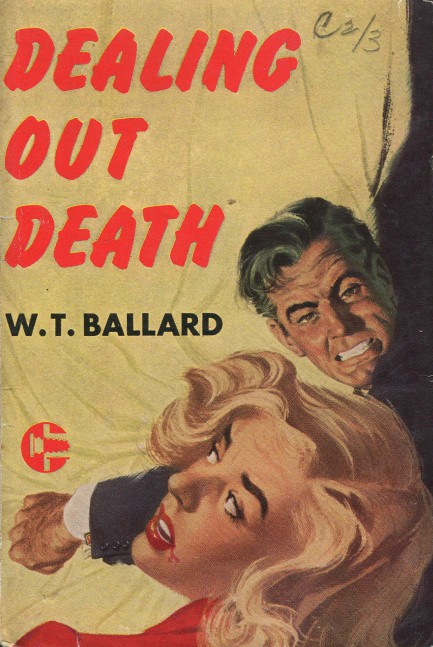  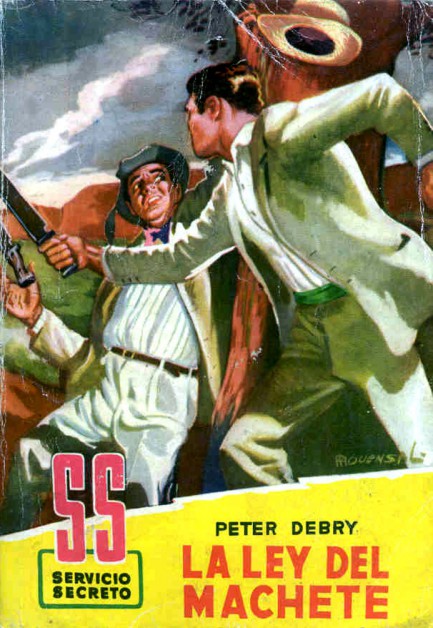 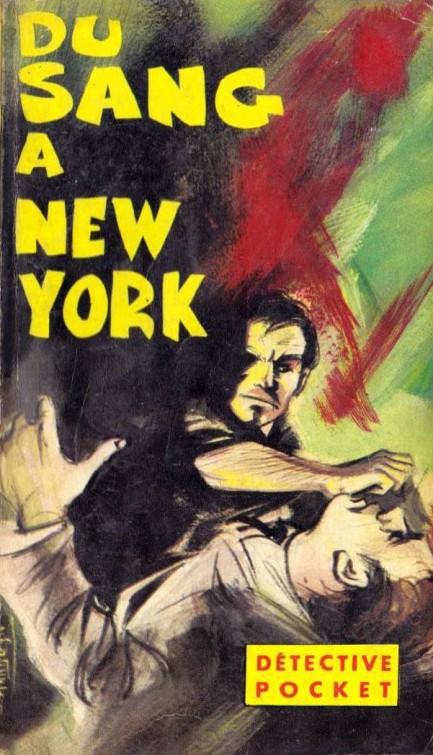 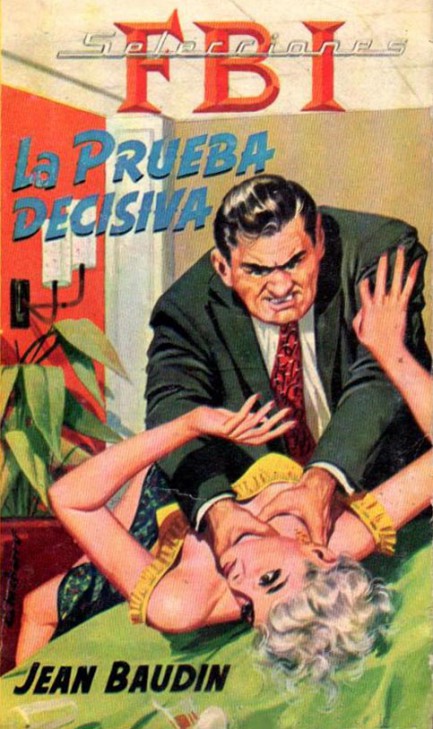 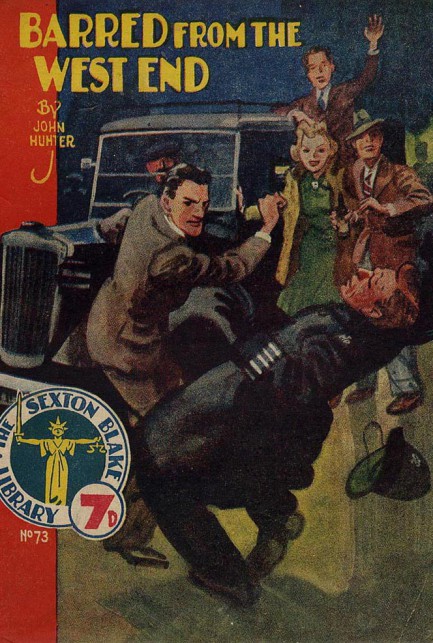 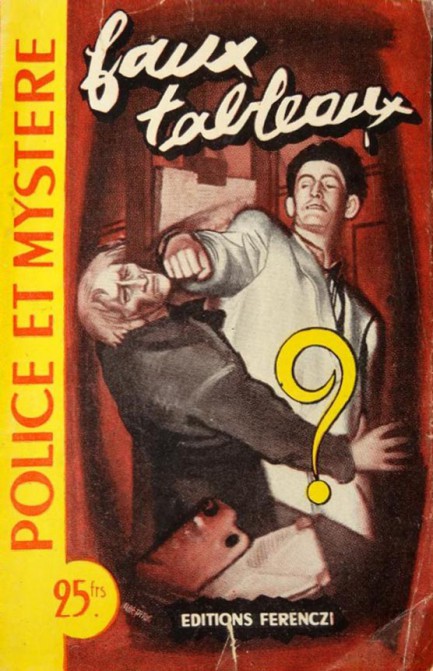 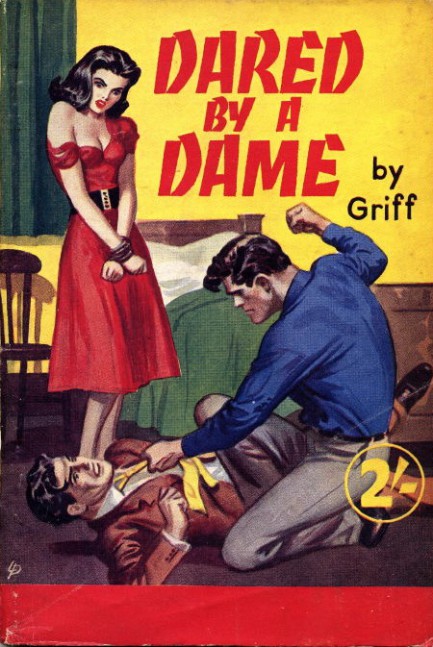 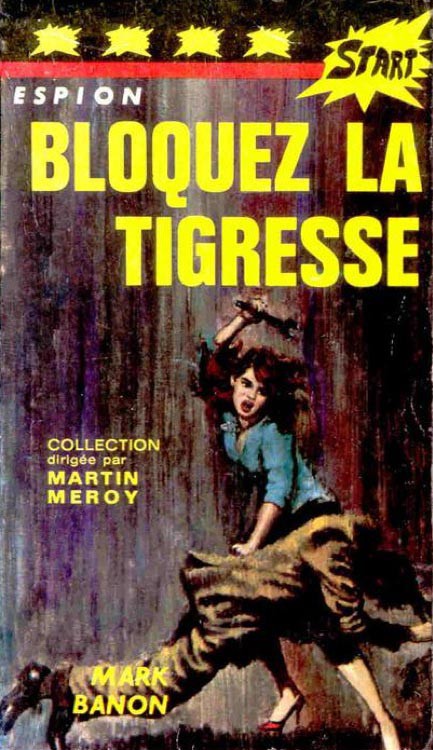 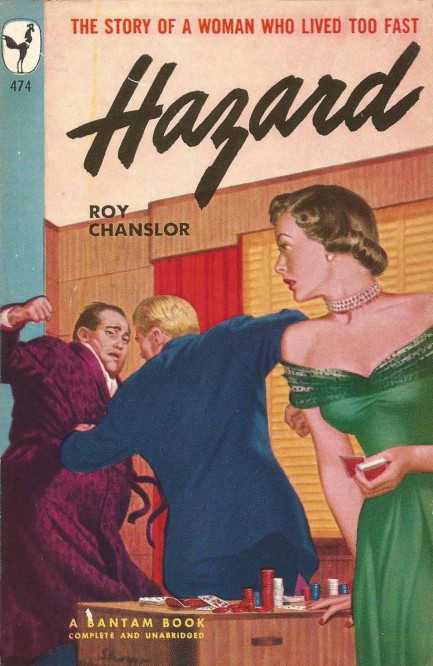 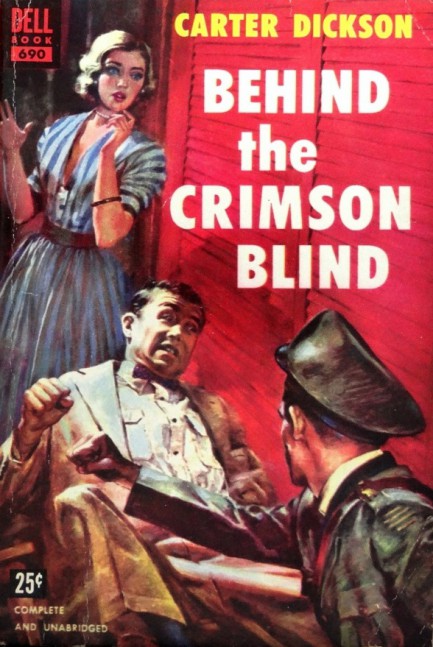 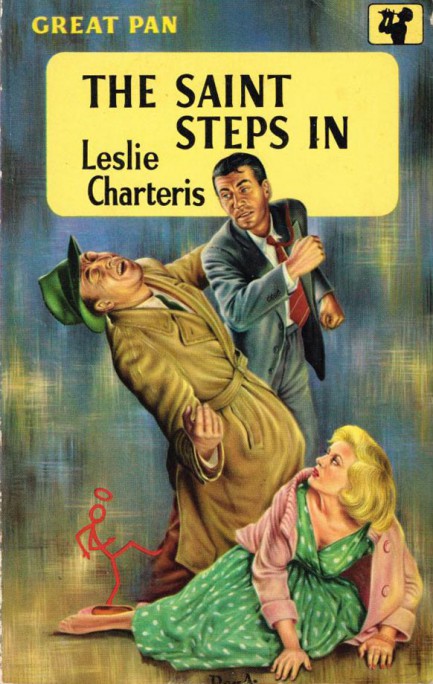 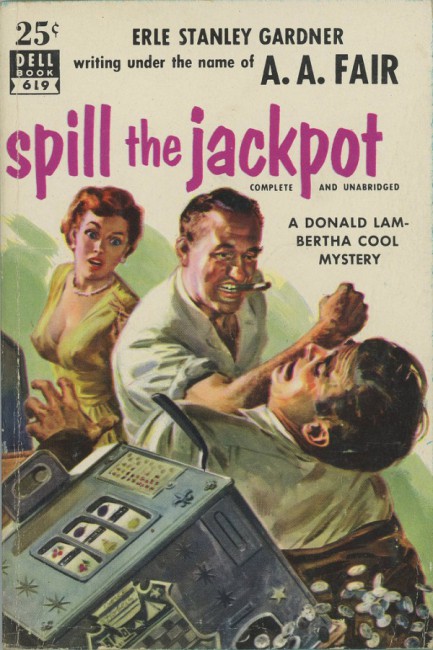 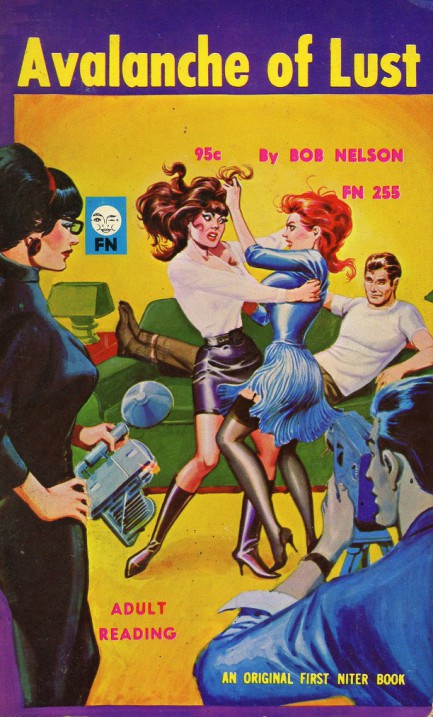 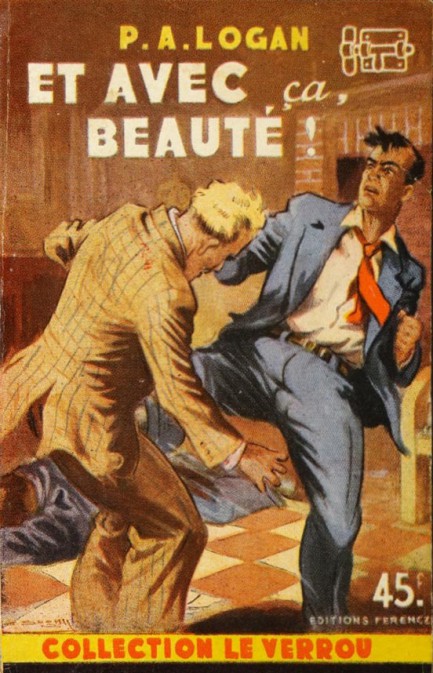 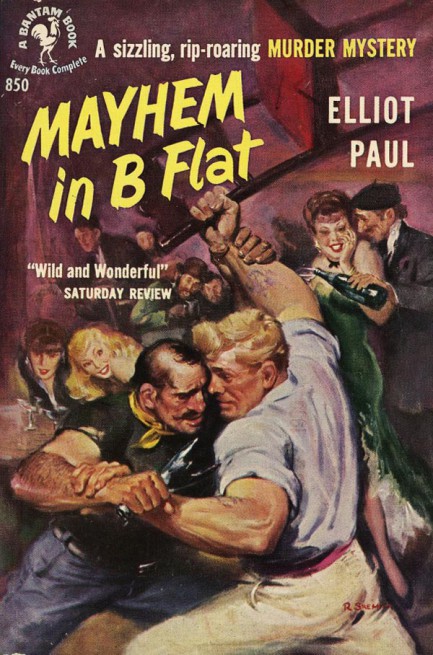

|
 |

The headlines that mattered yesteryear.
1945—Mussolini Is Arrested
Italian dictator Benito Mussolini, his mistress Clara Petacci, and fifteen supporters are arrested by Italian partisans in Dongo, Italy while attempting to escape the region in the wake of the collapse of Mussolini's fascist government. The next day, Mussolini and his mistress are both executed, along with most of the members of their group. Their bodies are then trucked to Milan where they are hung upside down on meathooks from the roof of a gas station, then spat upon and stoned until they are unrecognizable. 1933—The Gestapo Is Formed
The Geheime Staatspolizei, aka Gestapo, the official secret police force of Nazi Germany, is established. It begins under the administration of SS leader Heinrich Himmler in his position as Chief of German Police, but by 1939 is administered by the Reichssicherheitshauptamt, or Reich Main Security Office, and is a feared entity in every corner of Germany and beyond. 1937—Guernica Is Bombed
In Spain during the Spanish Civil War, the Basque town of Guernica is bombed by the German Luftwaffe, resulting in widespread destruction and casualties. The Basque government reports 1,654 people killed, while later research suggests far fewer deaths, but regardless, Guernica is viewed as an example of terror bombing and other countries learn that Nazi Germany is committed to that tactic. The bombing also becomes inspiration for Pablo Picasso, resulting in a protest painting that is not only his most famous work, but one the most important pieces of art ever produced. 1939—Batman Debuts
In Detective Comics #27, DC Comics publishes its second major superhero, Batman, who becomes one of the most popular comic book characters of all time, and then a popular camp television series starring Adam West, and lastly a multi-million dollar movie franchise starring Michael Keaton, then George Clooney, and finally Christian Bale. 1953—Crick and Watson Publish DNA Results
British scientists James D Watson and Francis Crick publish an article detailing their discovery of the existence and structure of deoxyribonucleic acid, or DNA, in Nature magazine. Their findings answer one of the oldest and most fundamental questions of biology, that of how living things reproduce themselves.
|

|
|

It's easy. We have an uploader that makes it a snap. Use it to submit your art, text, header, and subhead. Your post can be funny, serious, or anything in between, as long as it's vintage pulp. You'll get a byline and experience the fleeting pride of free authorship. We'll edit your post for typos, but the rest is up to you. Click here to give us your best shot.

|
|







